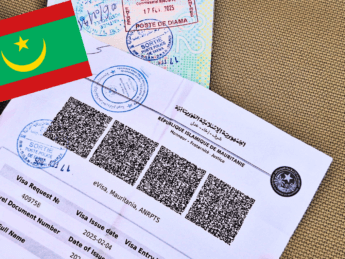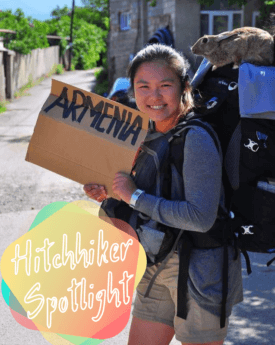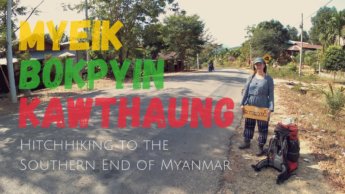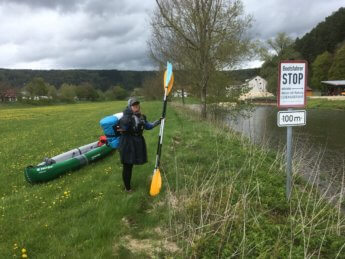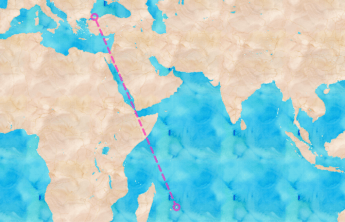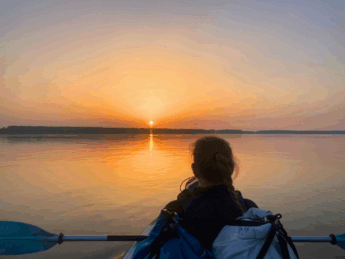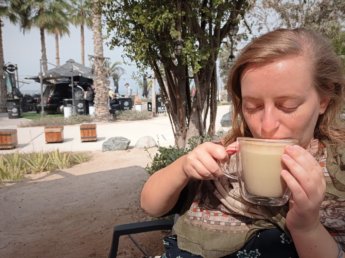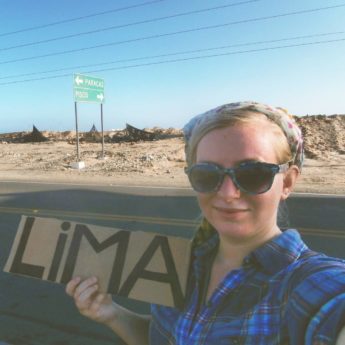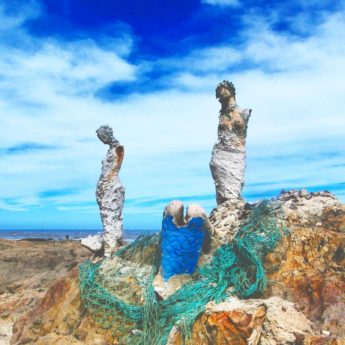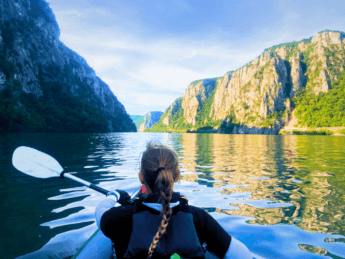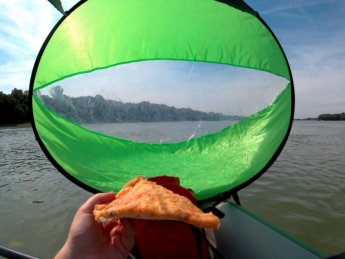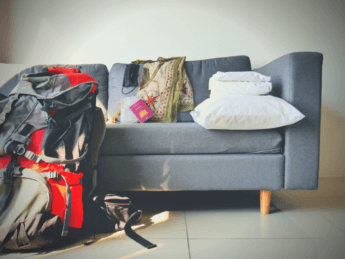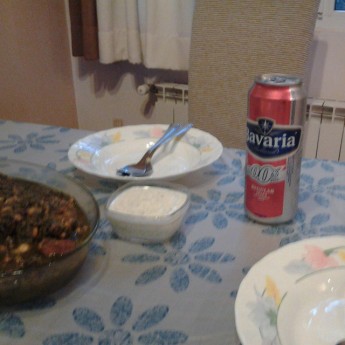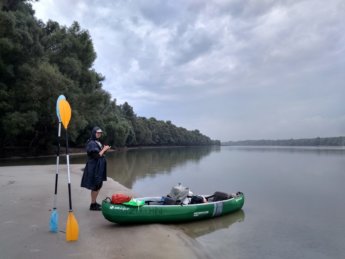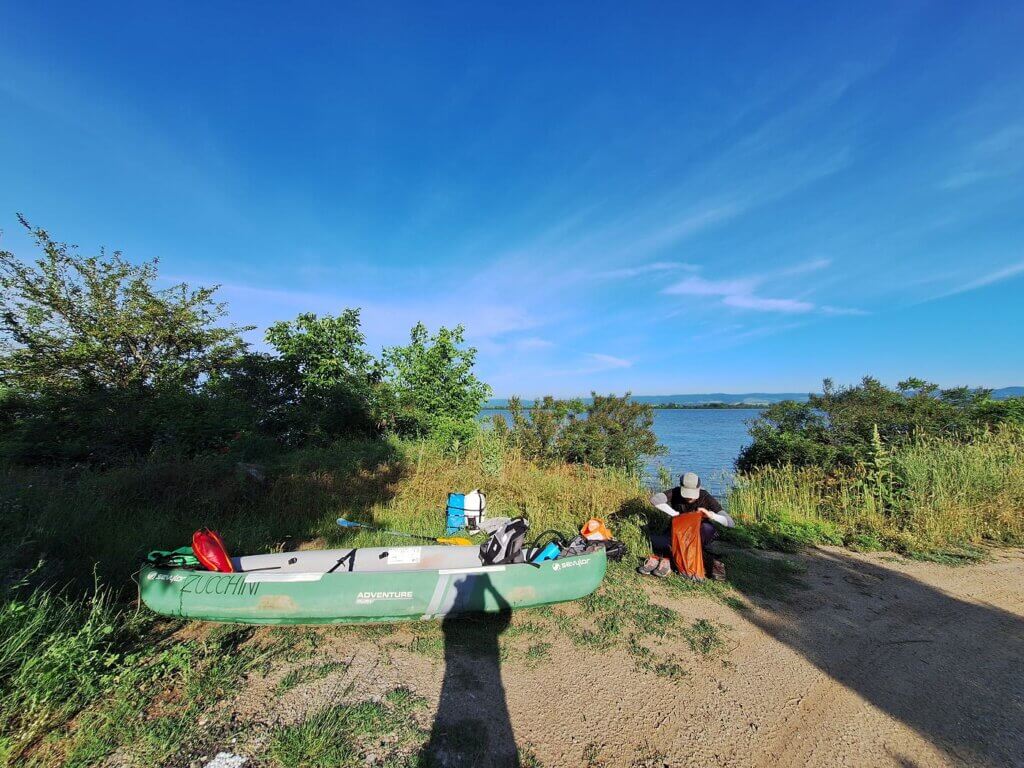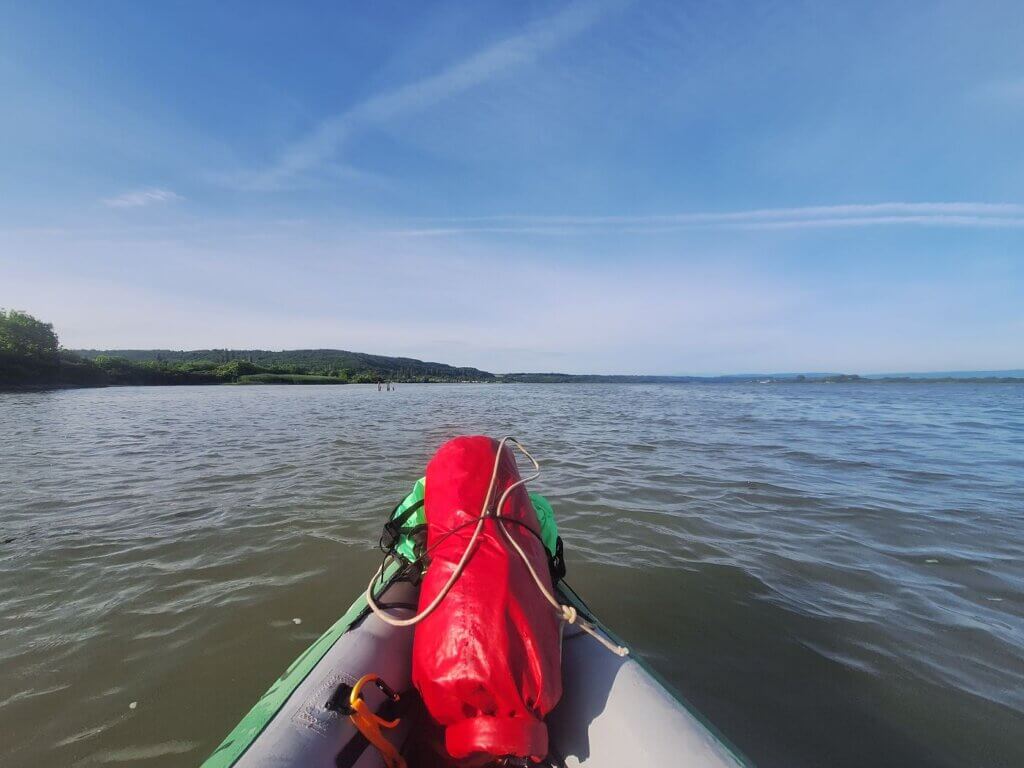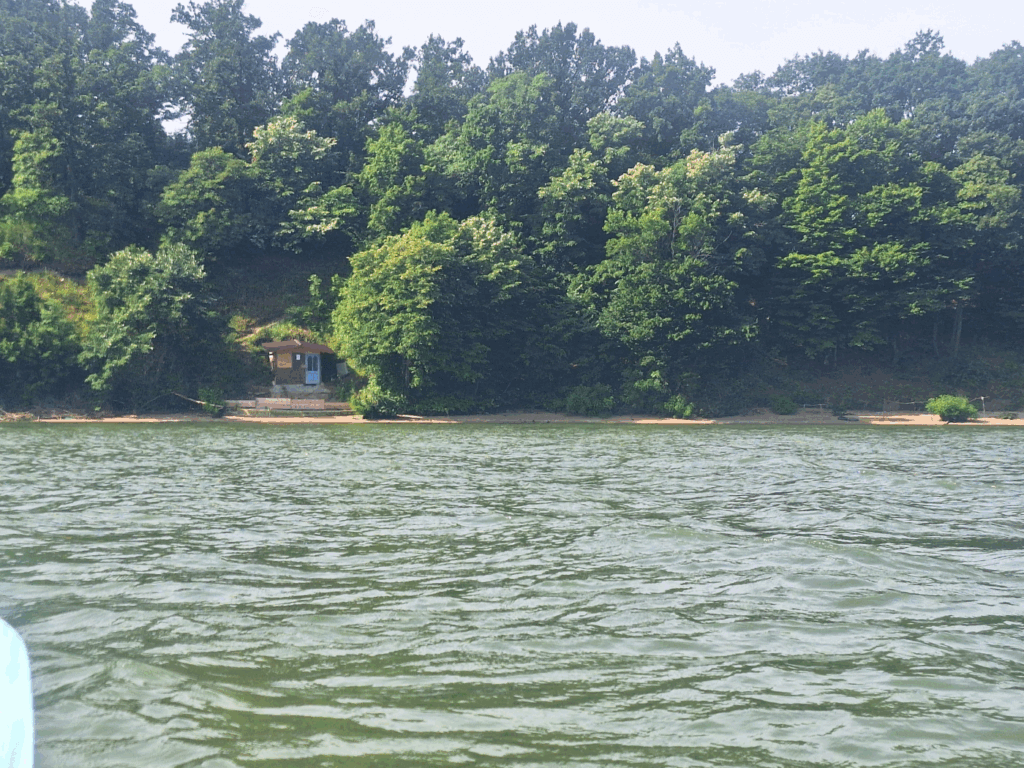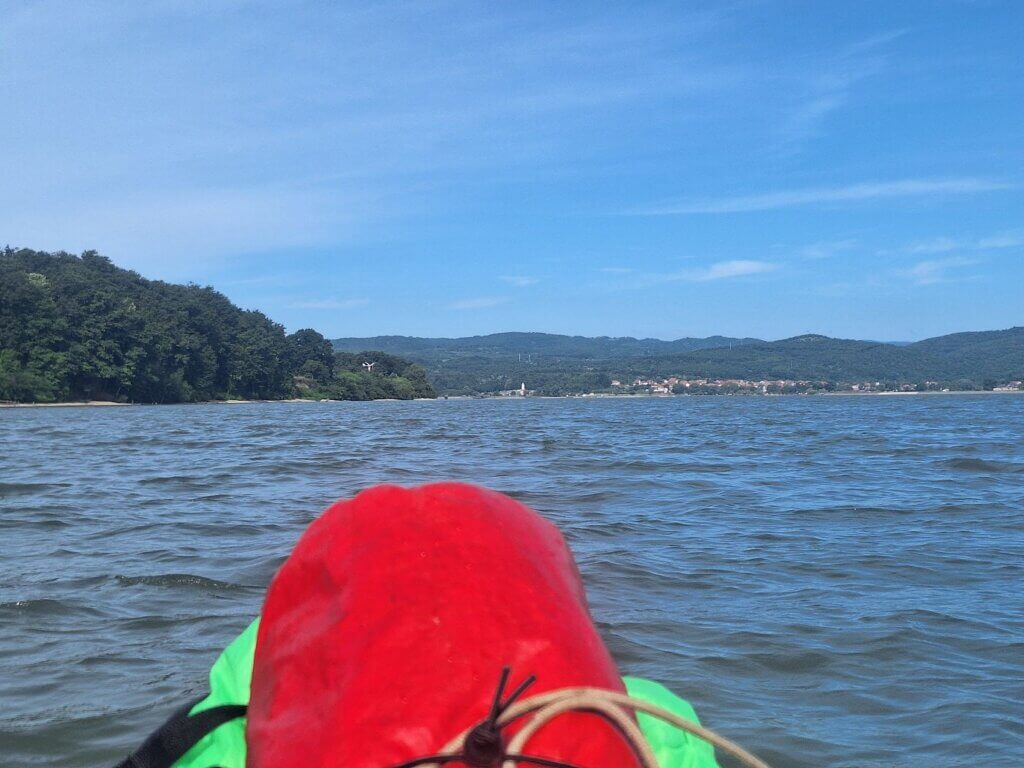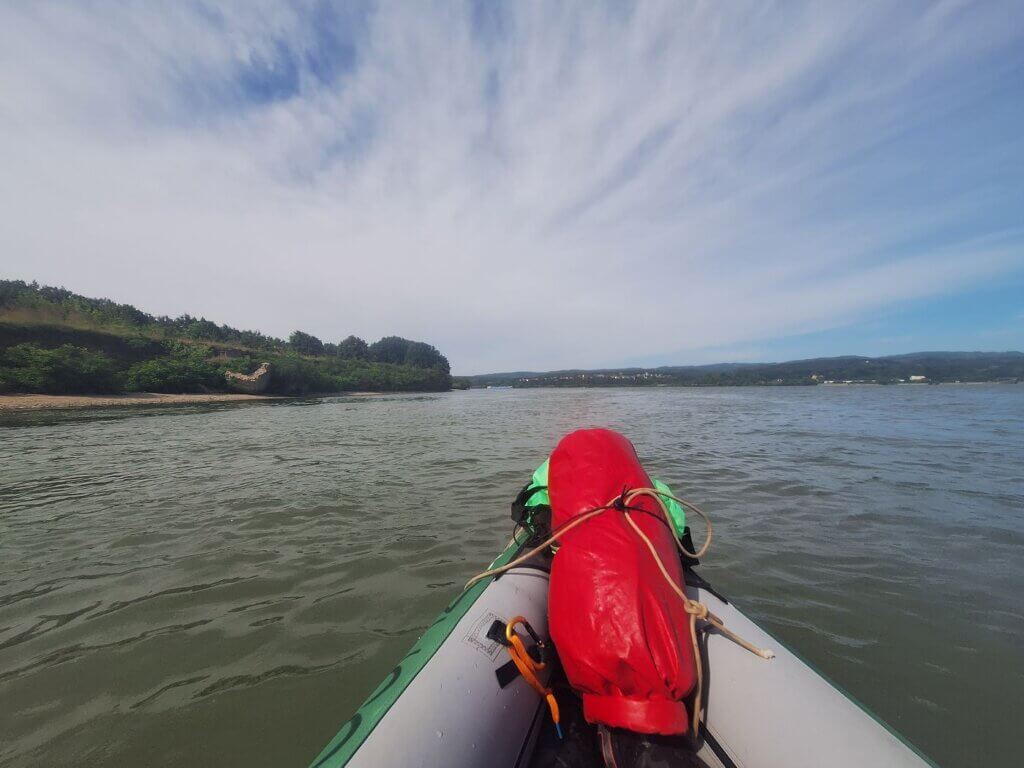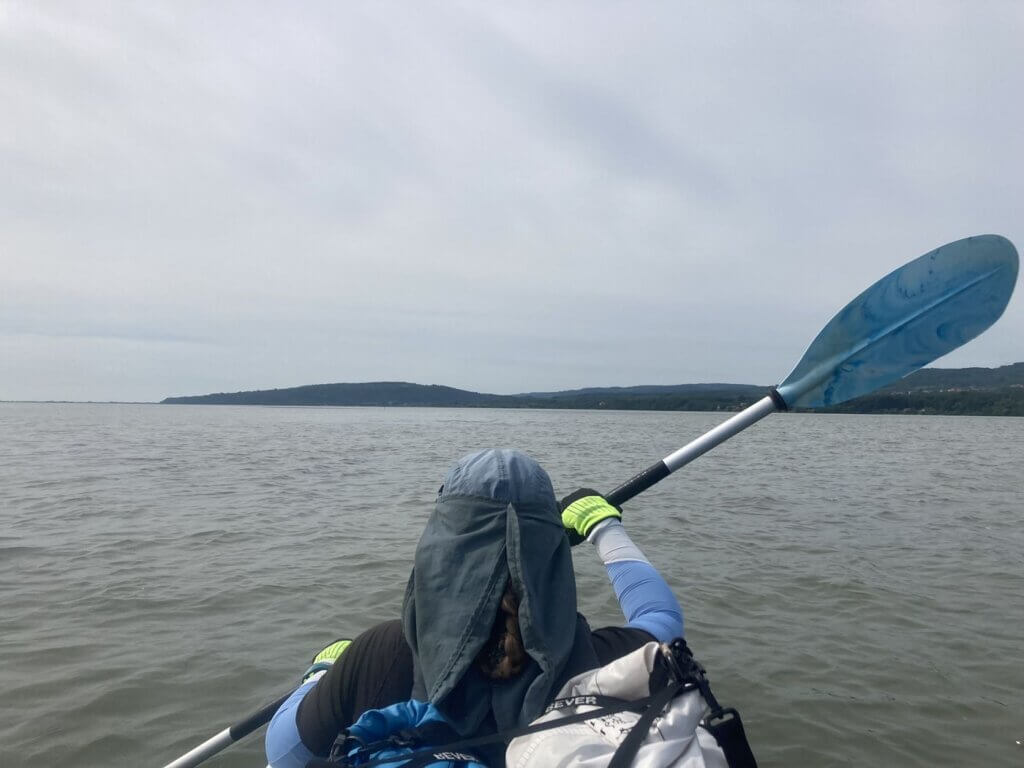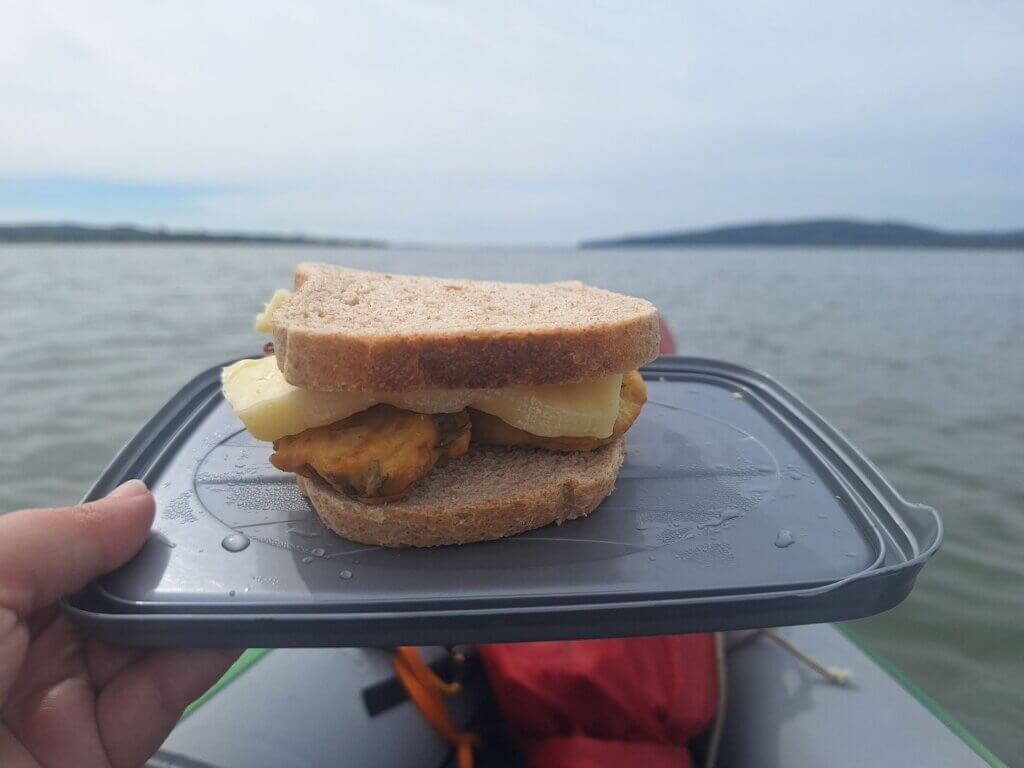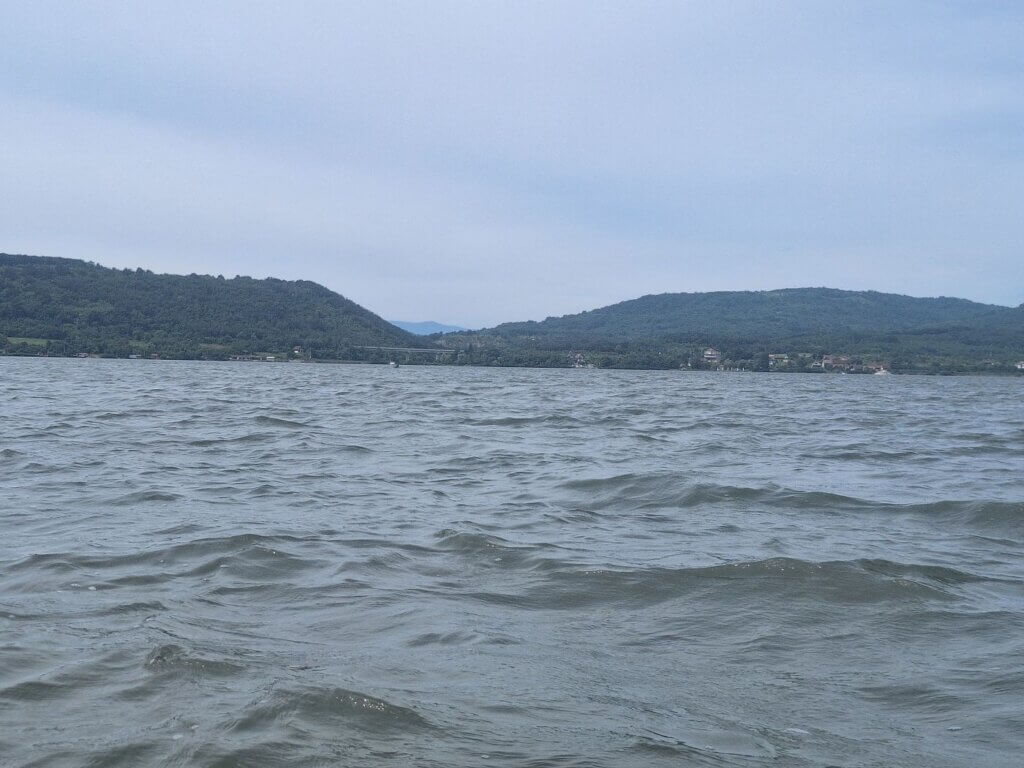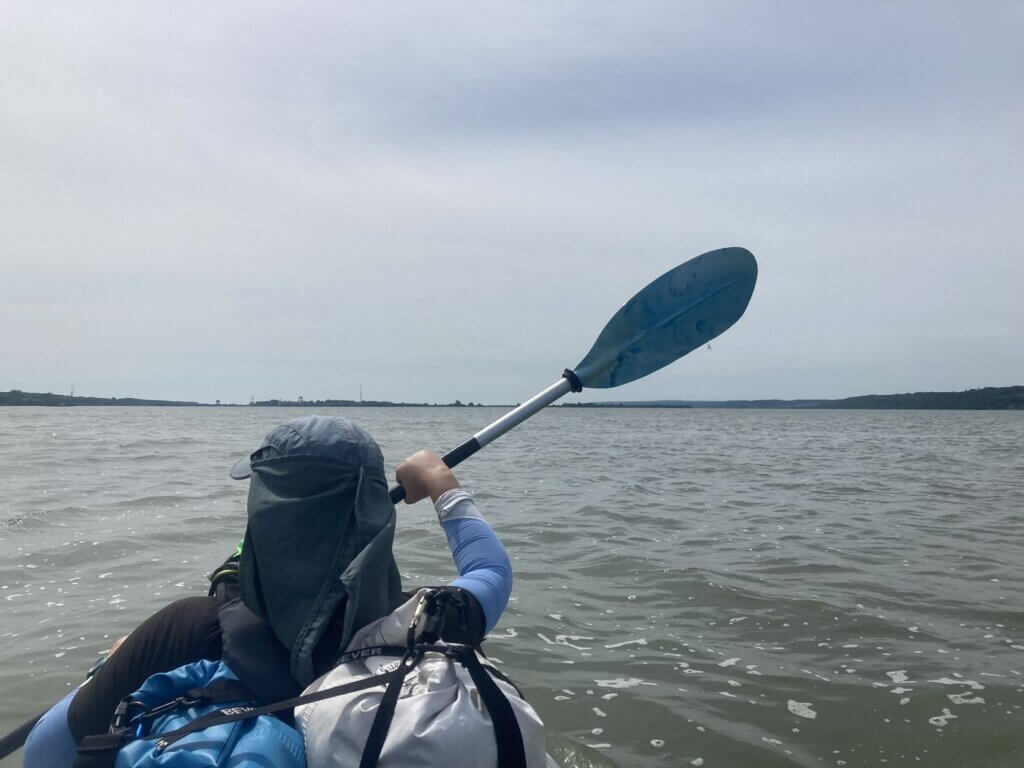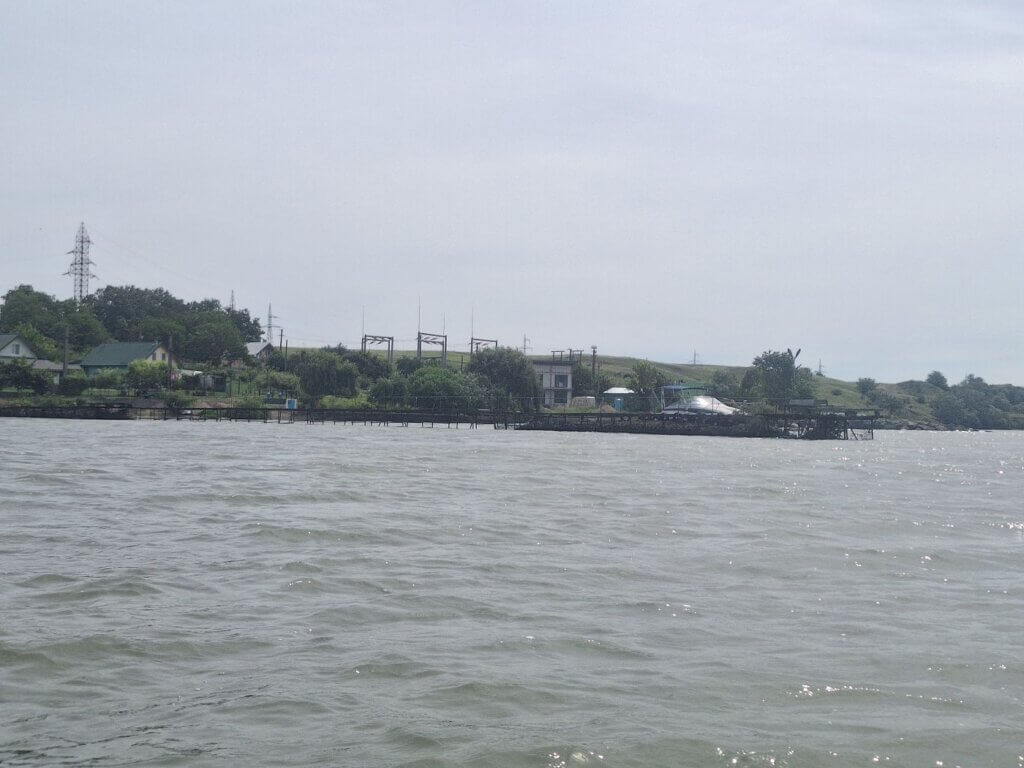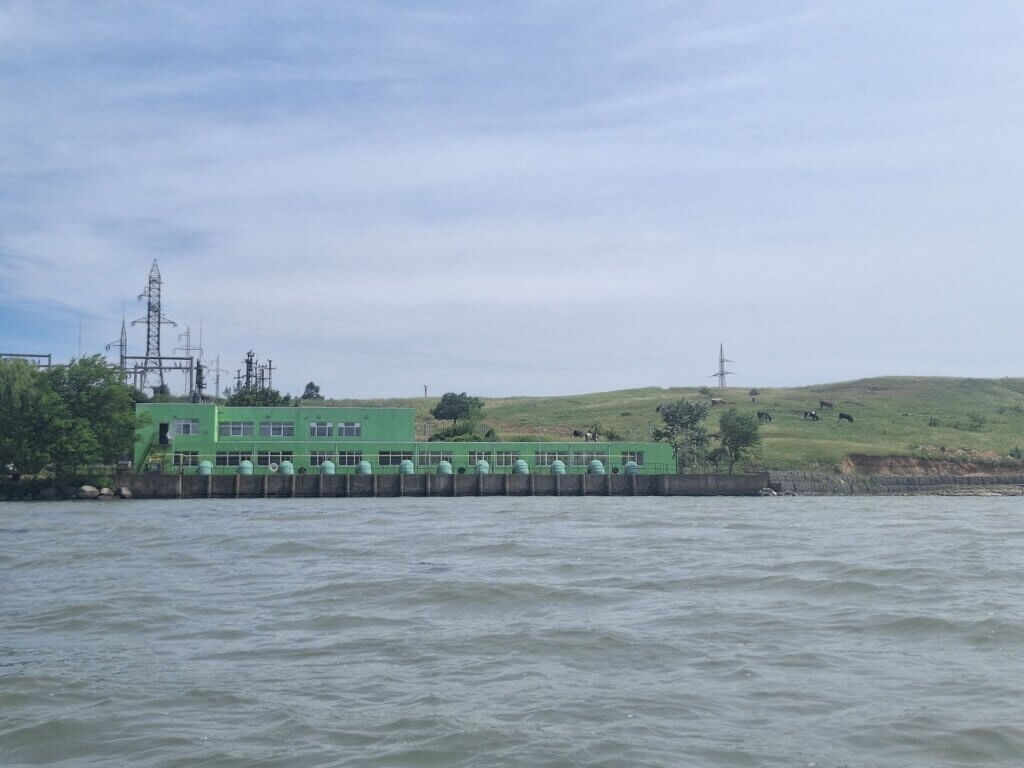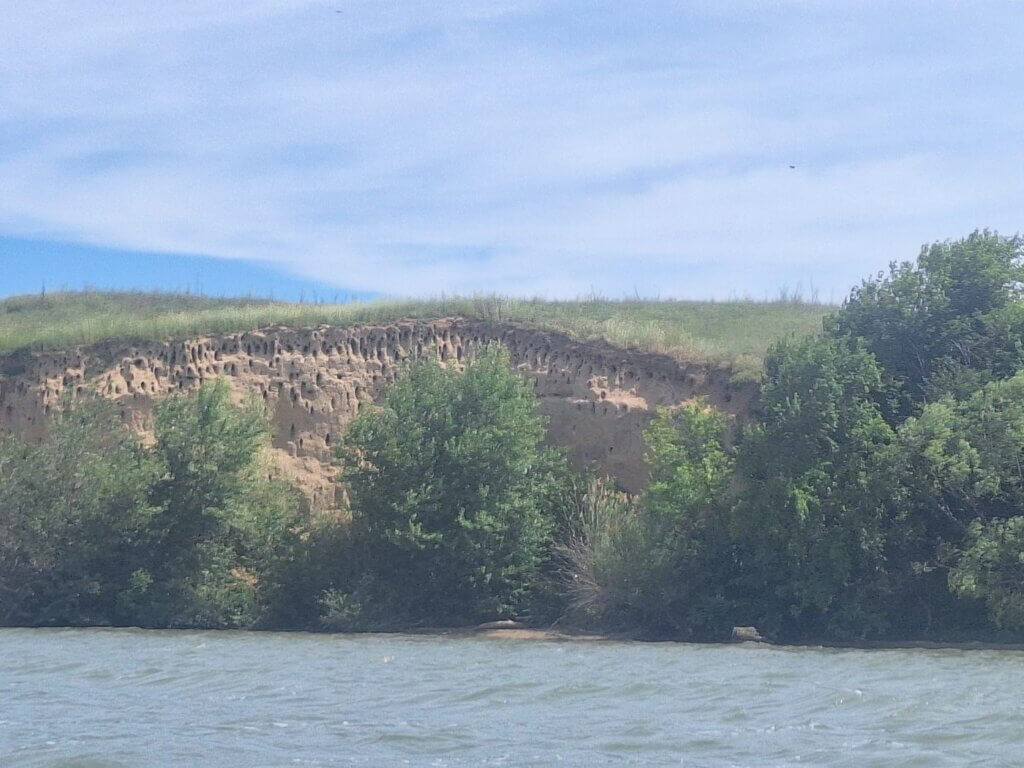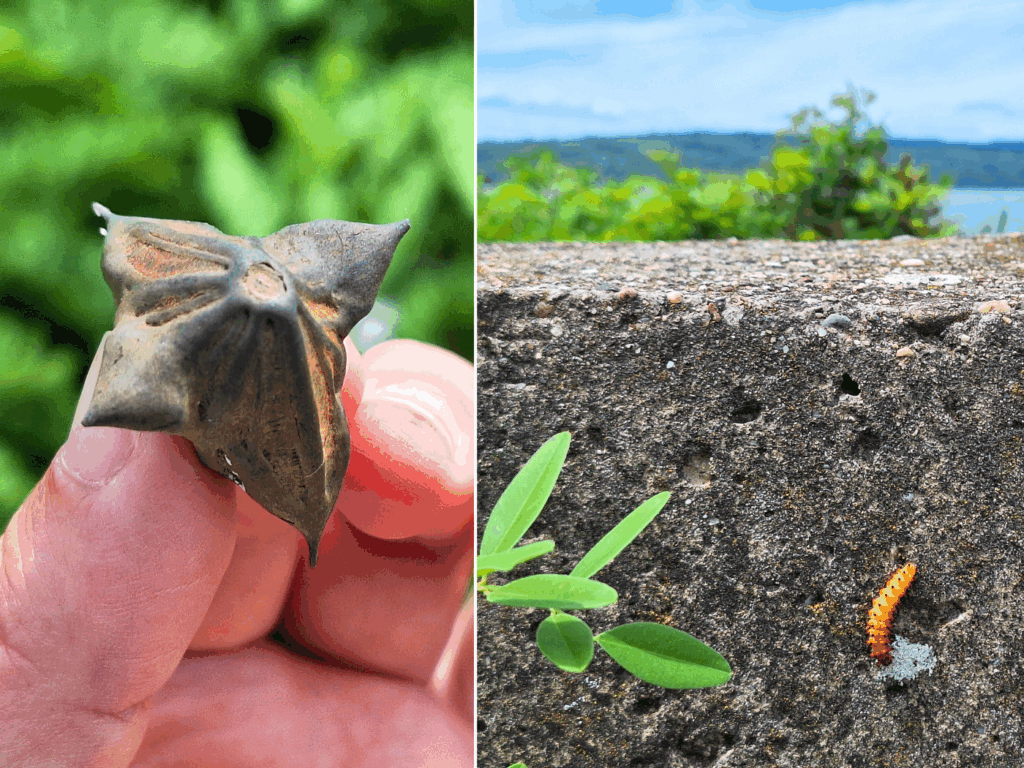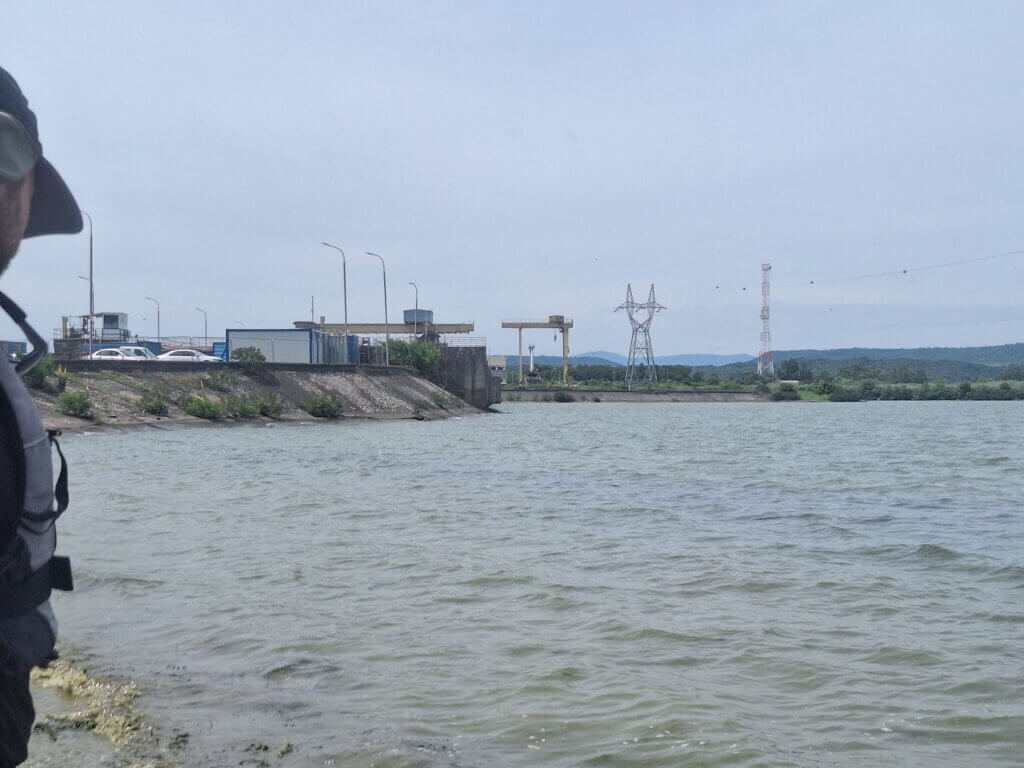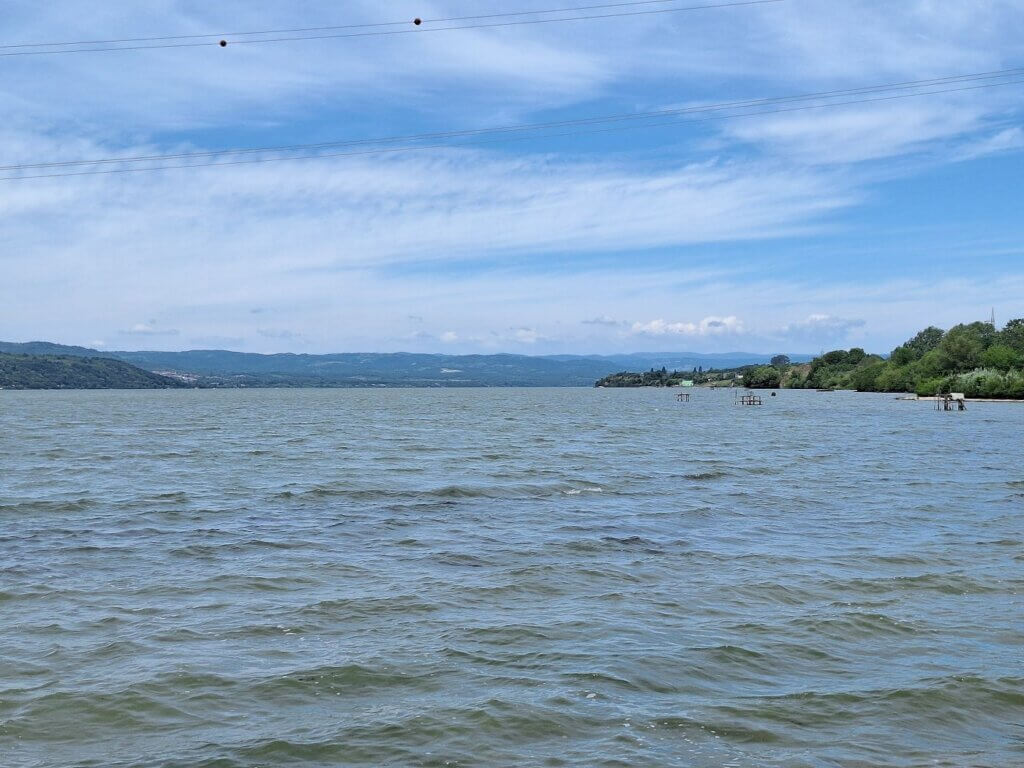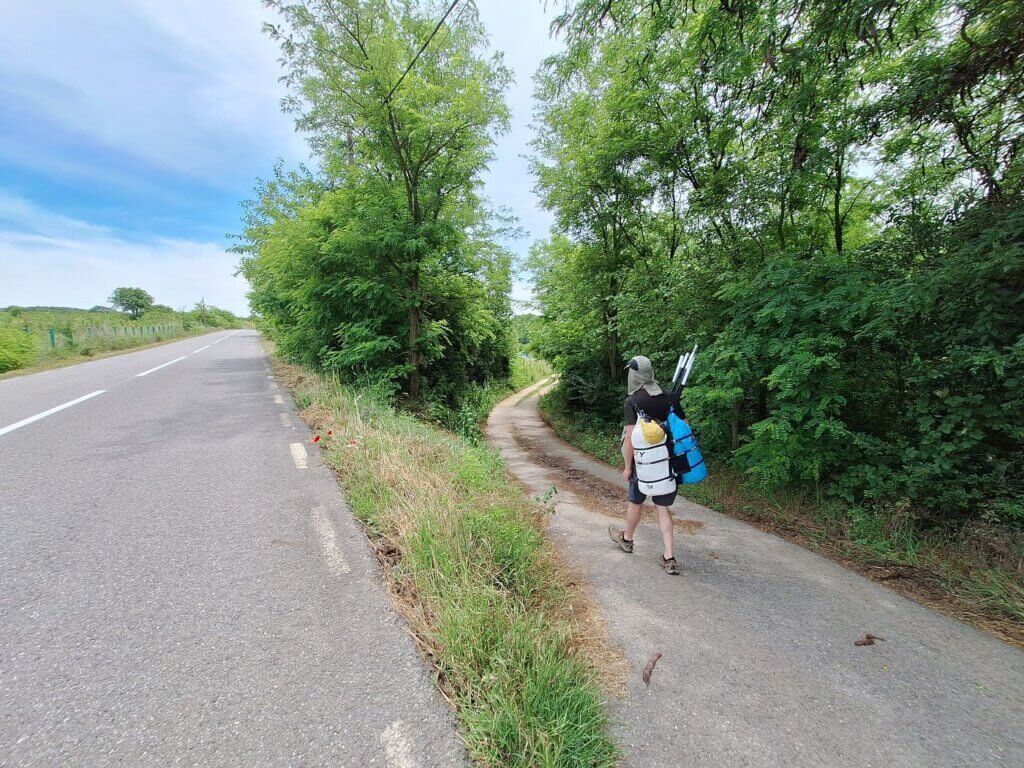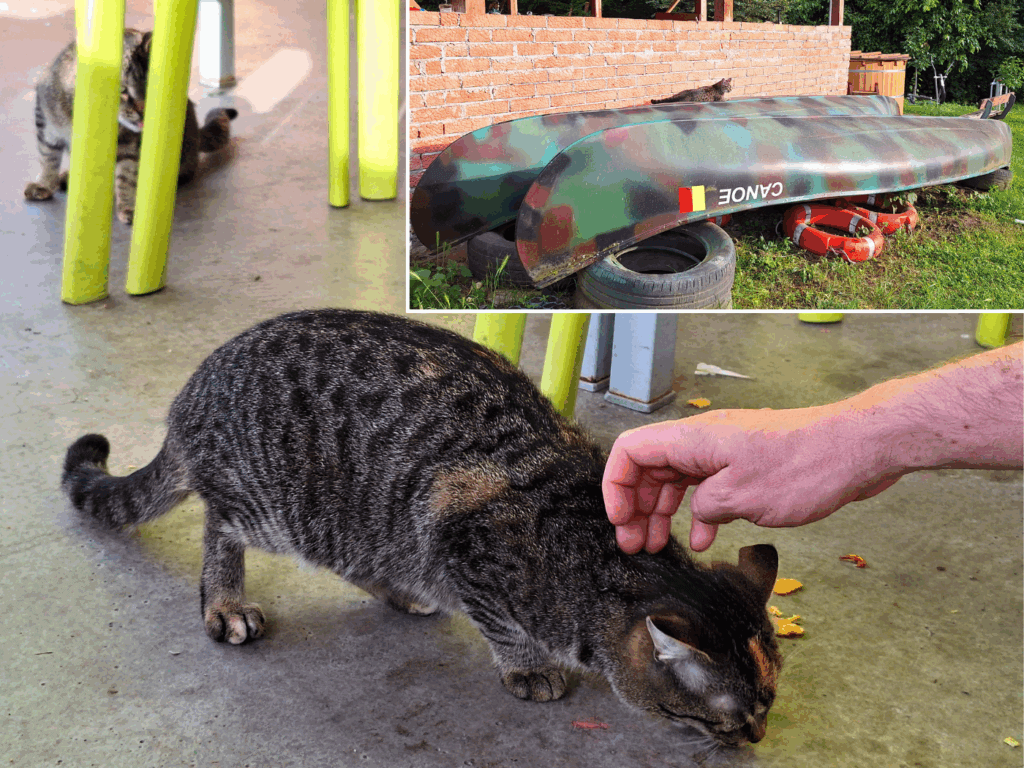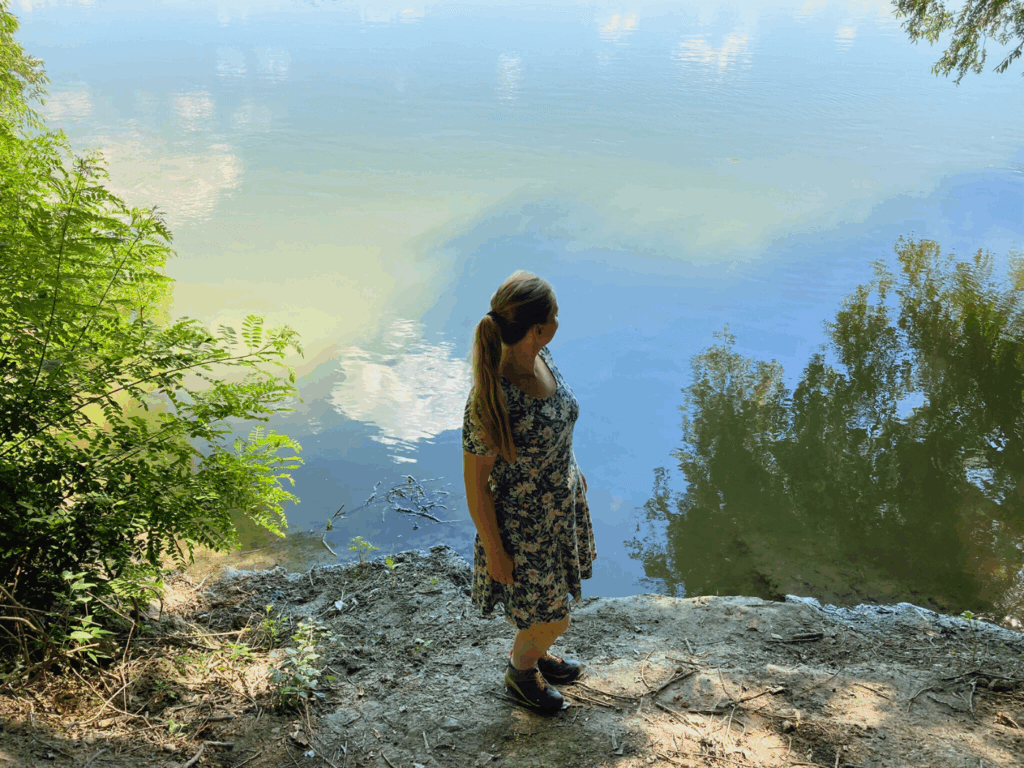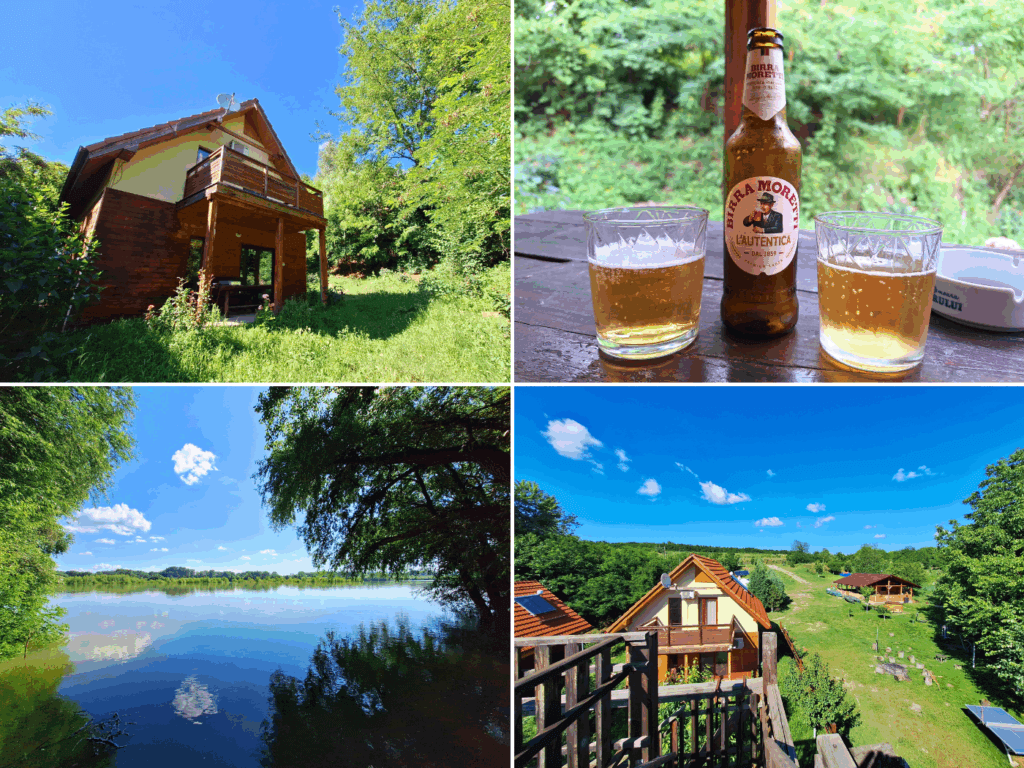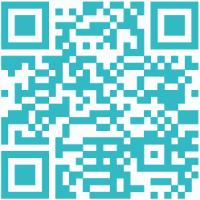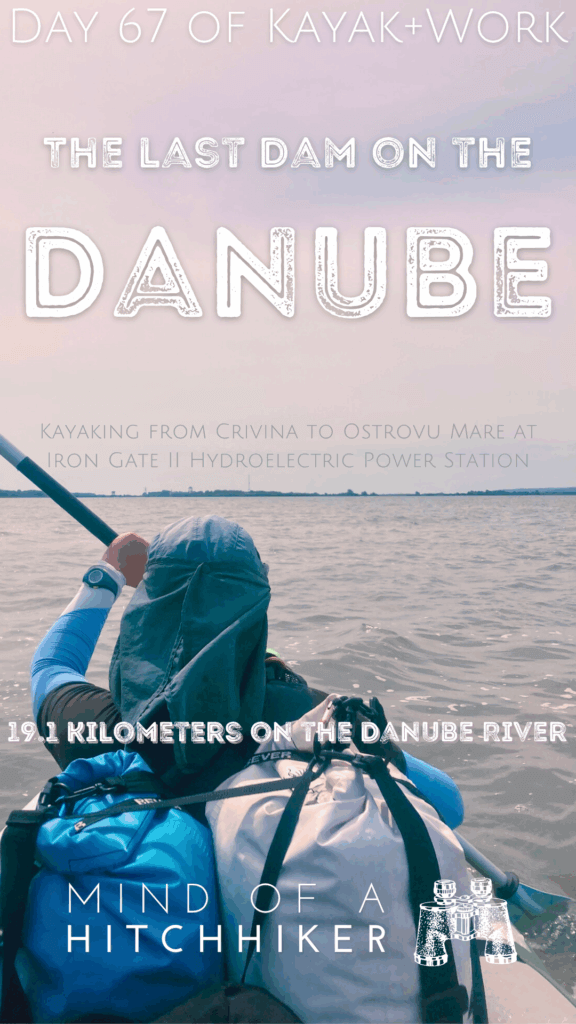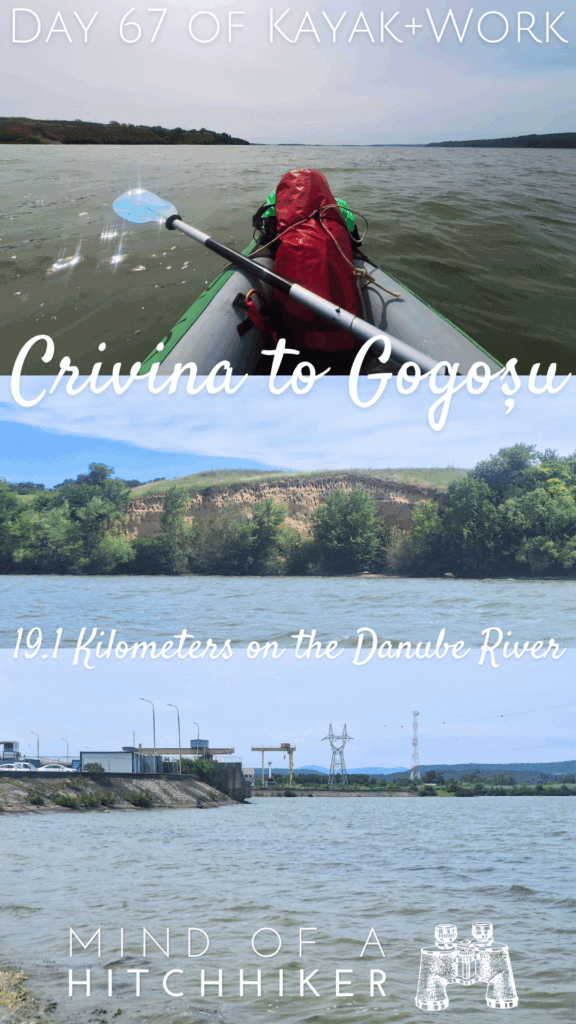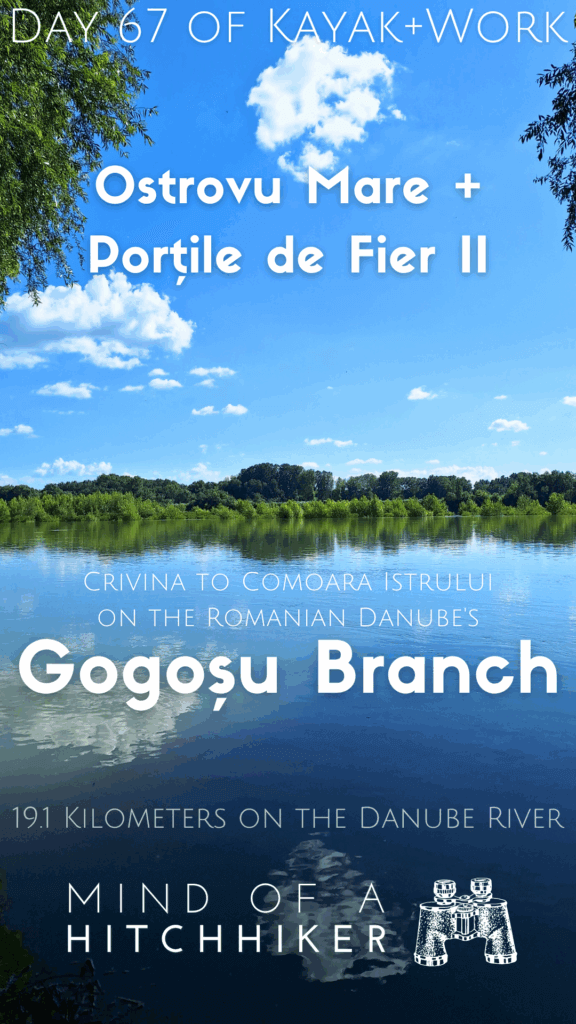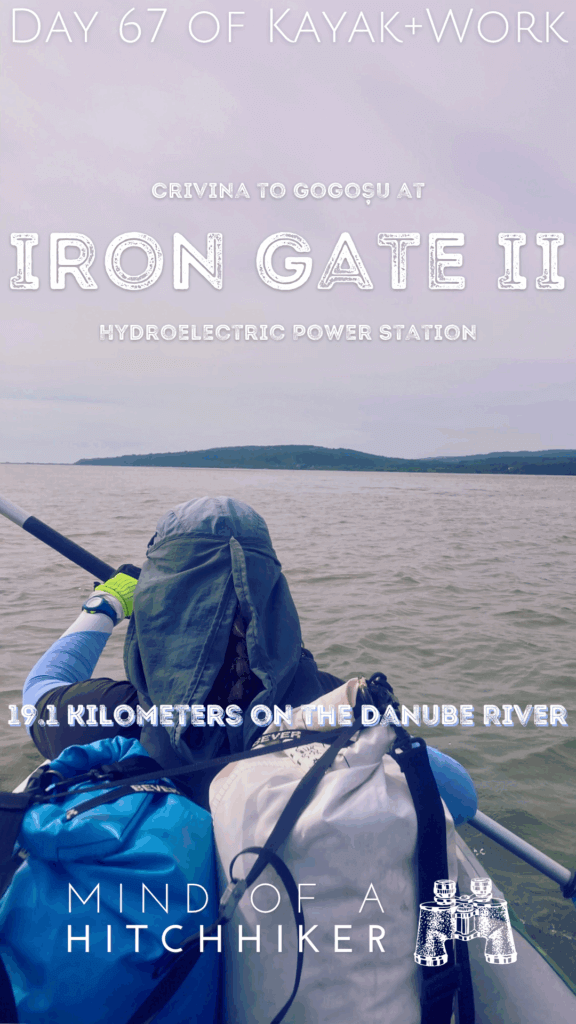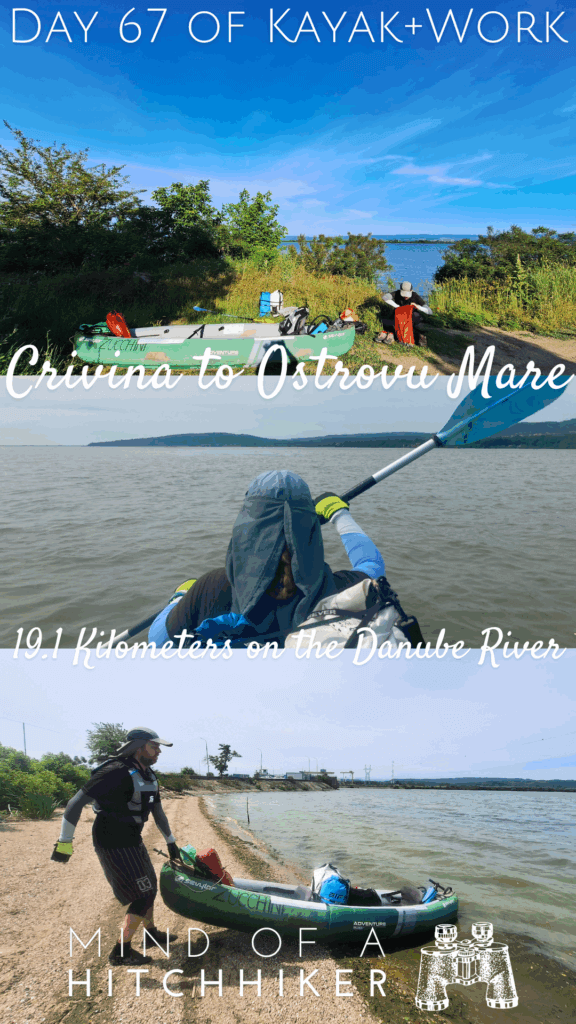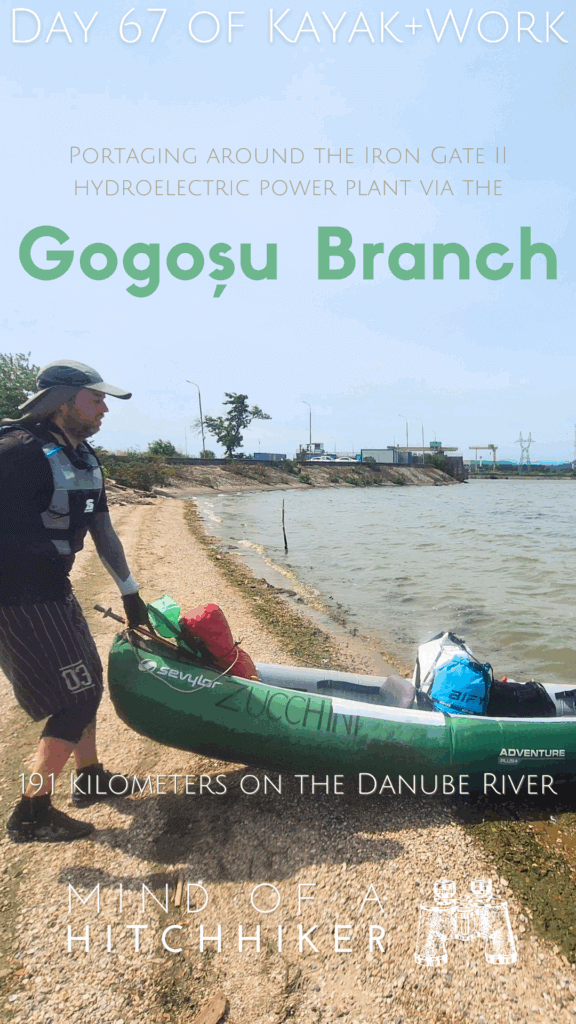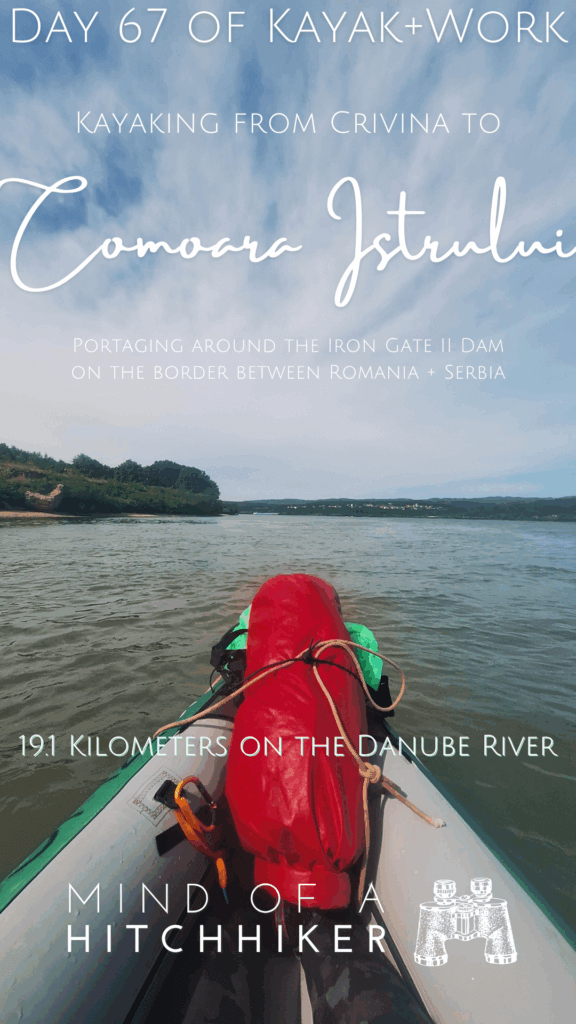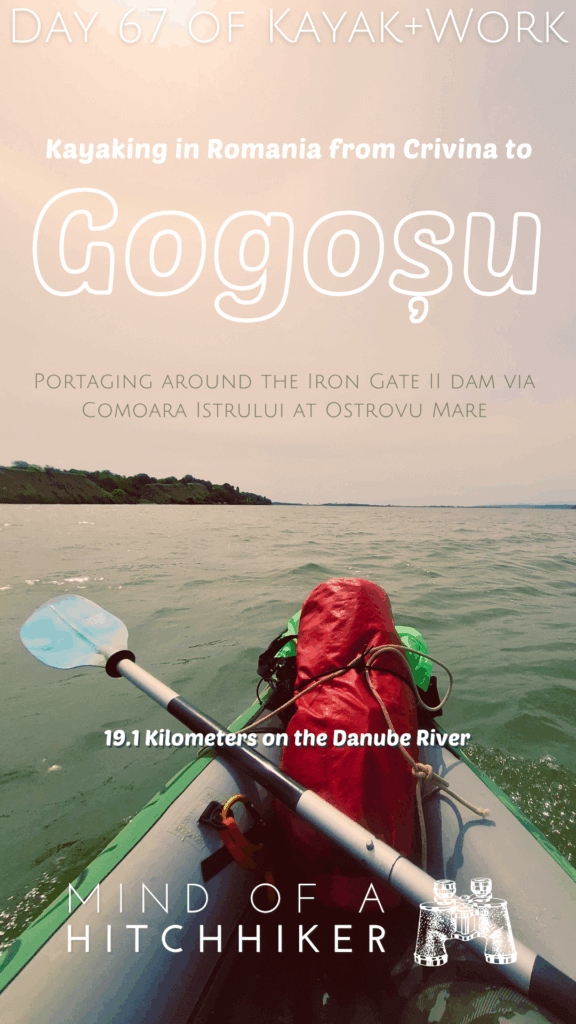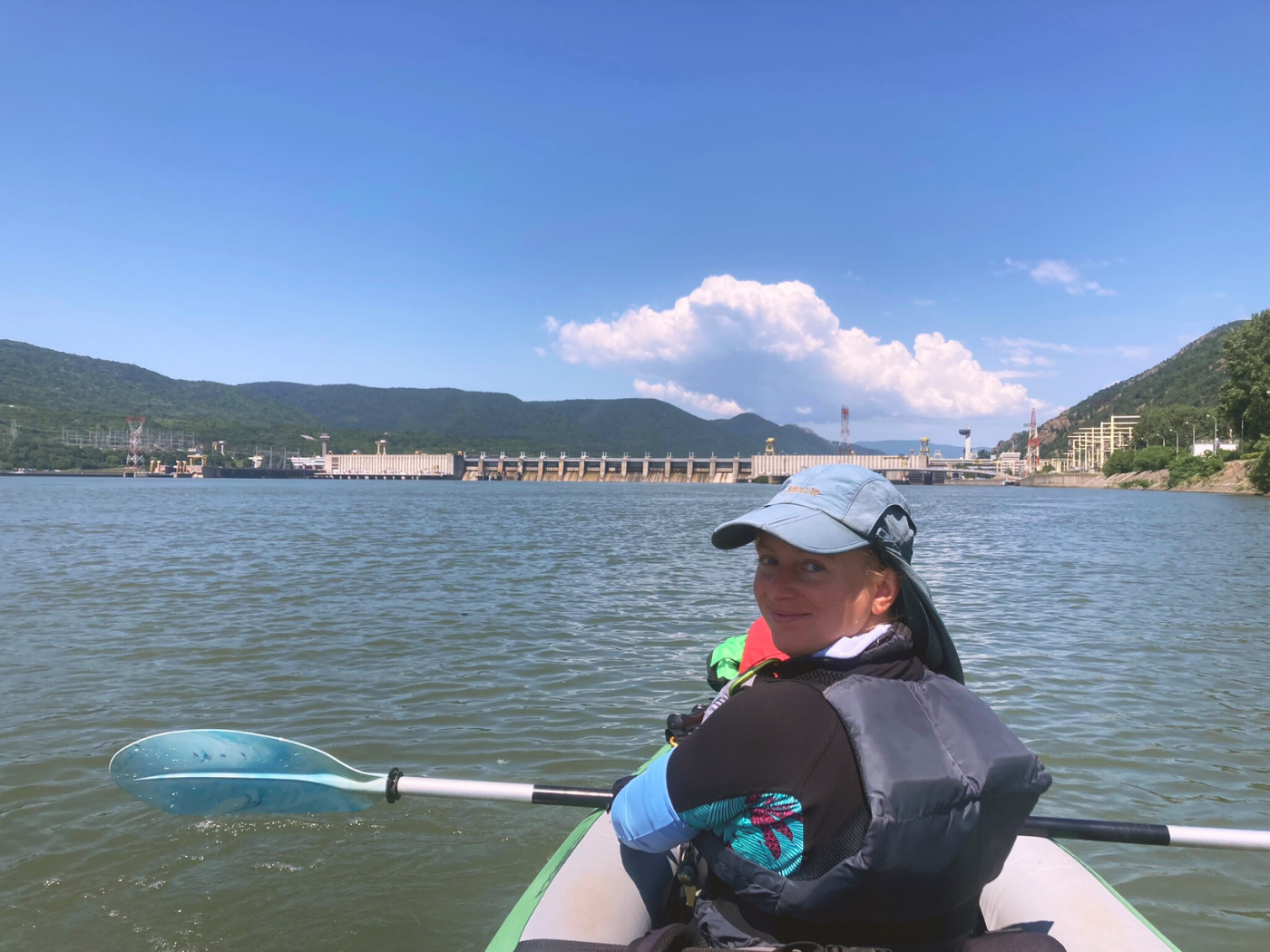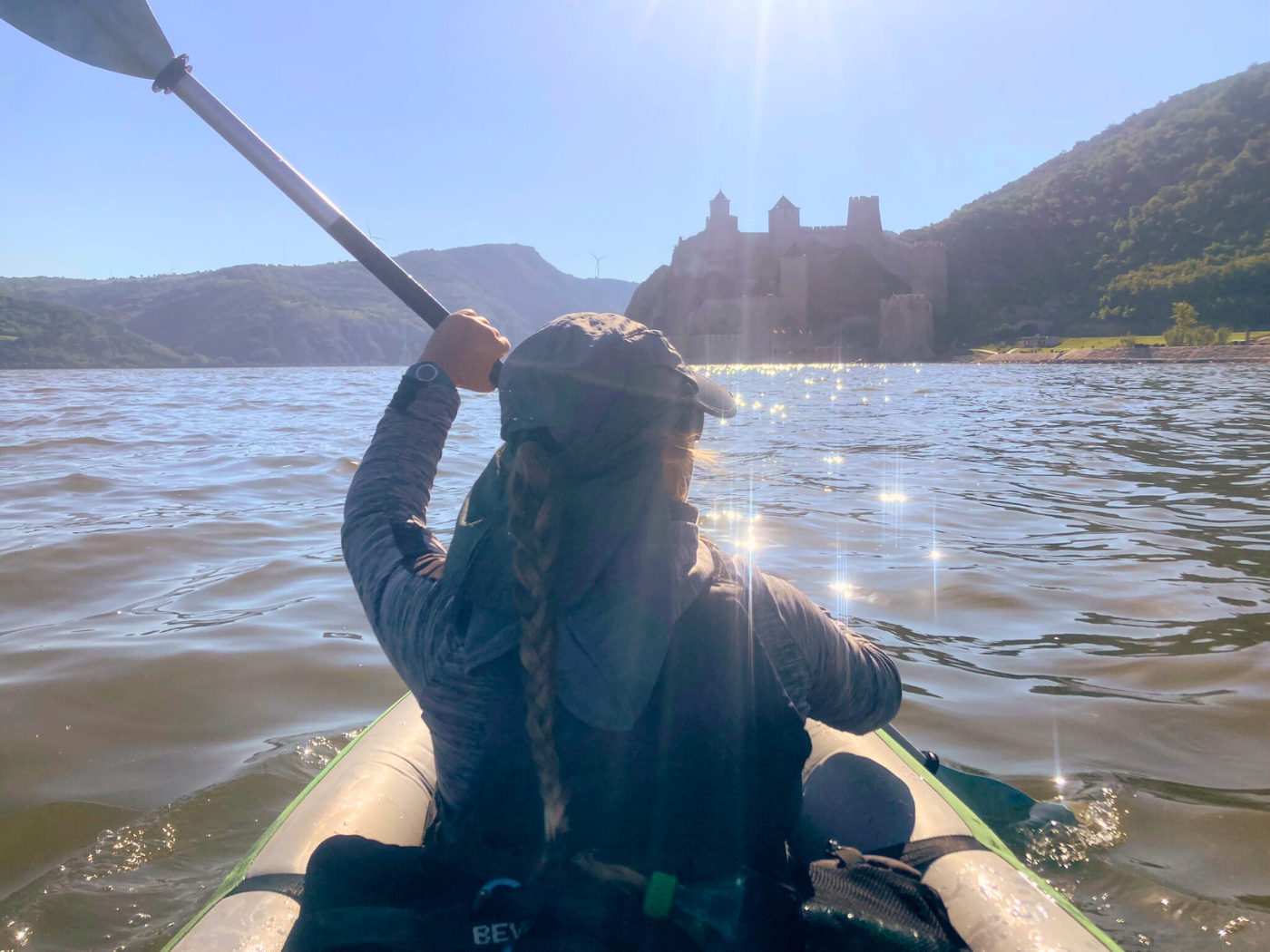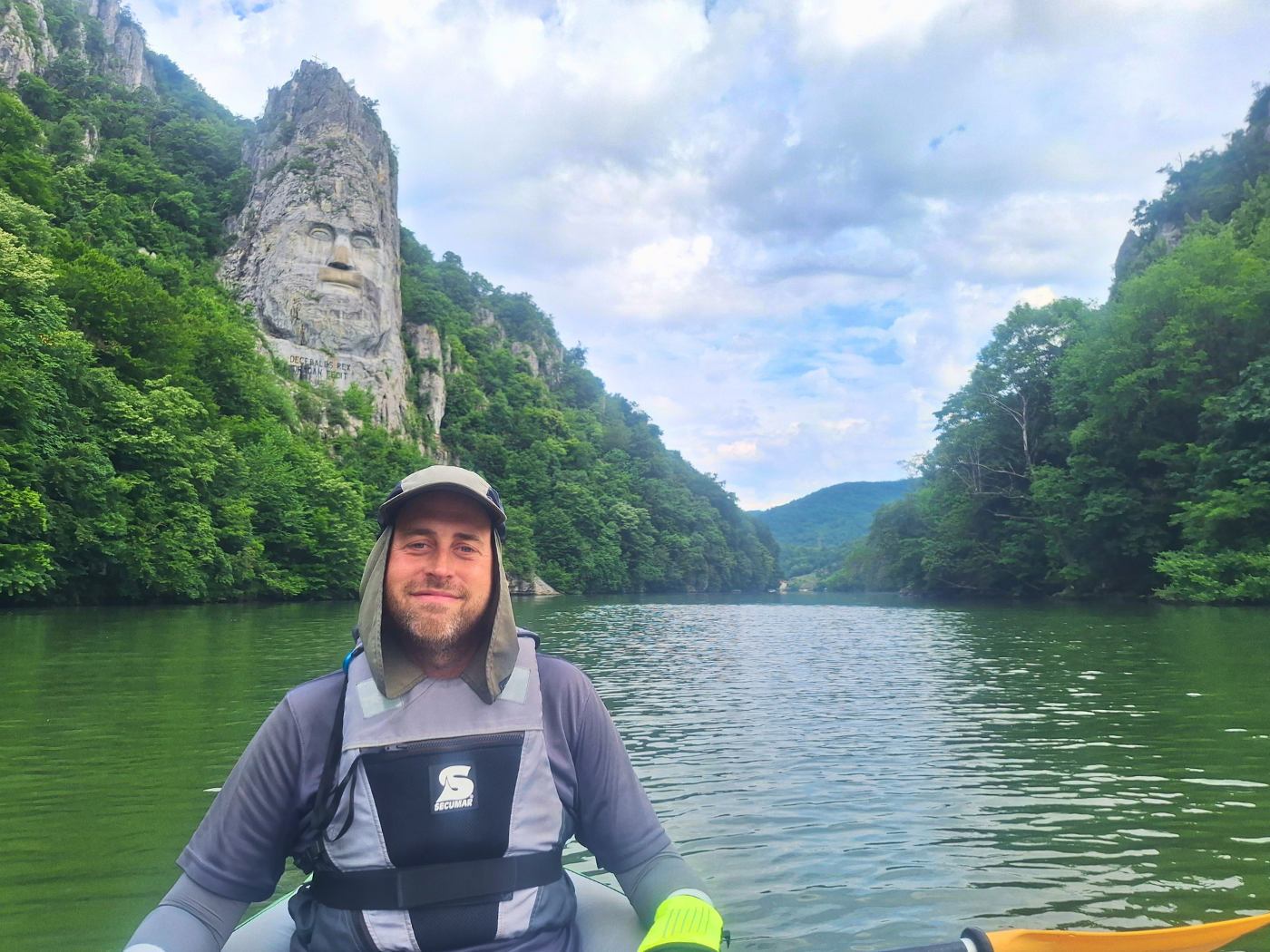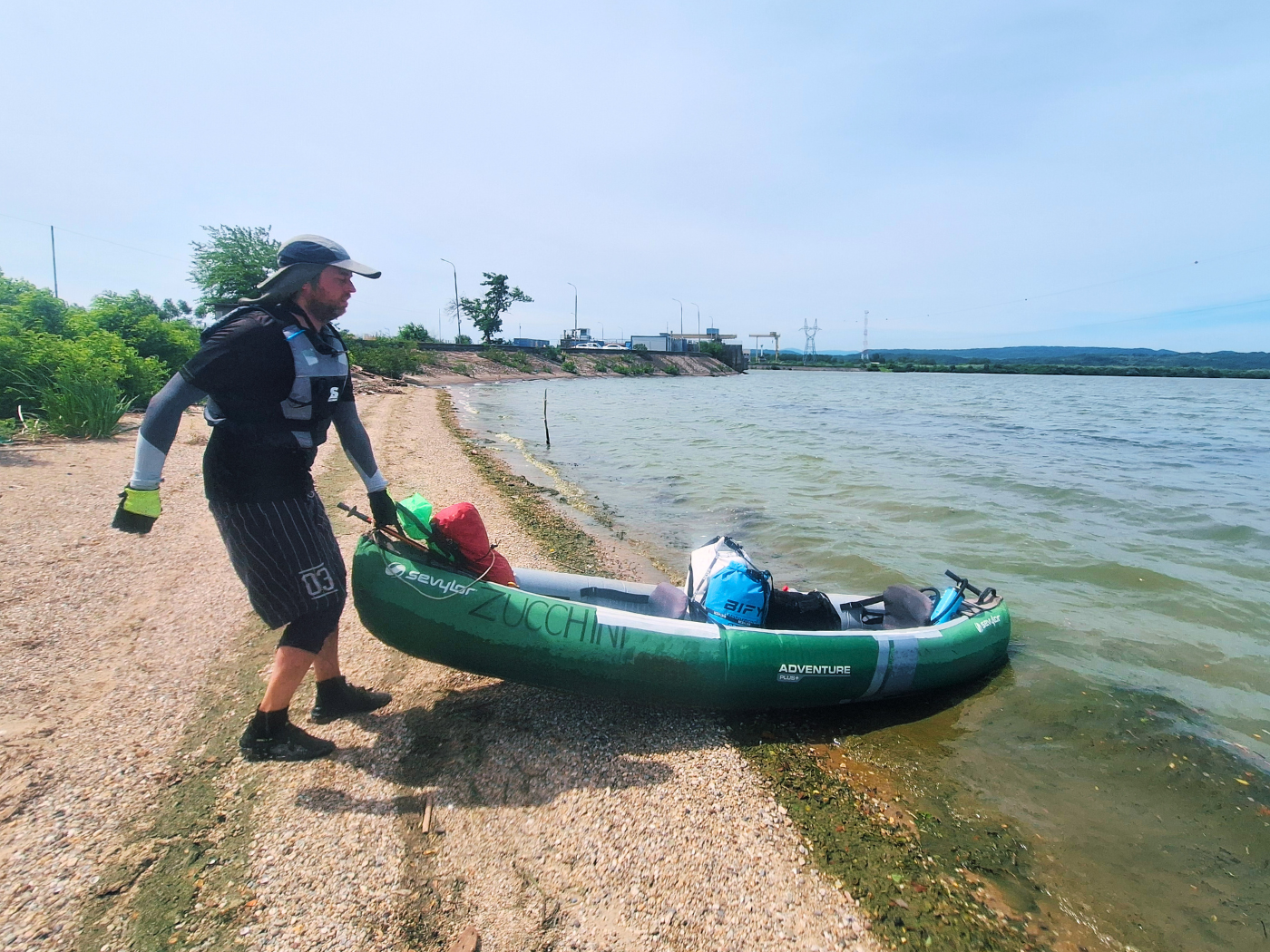
This kayak day happened on Wednesday the 5th of June, 2024. We kayaked from Crivina to the touristic complex of Comoara Istrului nearby the Gogoșu branch of the Danube at the Iron Gate II dam (Romanian: Porțile de Fier II – Serbian: Đerdap II).
Want to travel the (entire) Danube River in an adventurous way? Join our Facebook group Danube River Source to Sea: Kayak / Canoe / Bike / Hike / Sail to find your community
Contents
- 1 Why Bypass the Iron Gate II Locks?
- 2 Leaving Crivina for Comoara Istrului
- 3 Headwind to the Turn
- 4 Paddling Past Brza Palanka + Chased by Dogs
- 5 Lunch from Zucchini
- 6 Arriving at Gogoșu Dam Near Comoara Istrului
- 7 Packing Zucchini + Romanian Gendarmerie Nonsense
- 8 Arriving in Complex Turistic Comoara Istrului
- 9 Our Stay in Comoara Istrului
- 10 Informative post? Consider buying me a beer!
- 11 Wish to share? Thanks so much!
Why Bypass the Iron Gate II Locks?
Short reason: I don’t think we can get lucky twice.
We might have to wait hours in our kayak without shadow for a companion ship to arrive to go through the lock and descend the ~12 meters. Or we might arrive there and the lock operators aren’t fond of us at all. Since we don’t have a Sergio here, we cannot contact people and gauge the vibe in advance.
Long reason: starting from Crivina, kayaking to the Romanian lock on Iron Gate II is more than 30 kilometers of slow or no current. There’s no accommodation in the village of Ostrovu Mare to split it up, nor do we want to camp in this area so close to the border with Serbia. The only accommodation is this place called Complex Turistic Comoara Istrului on the Gogoșu branch of the Danube. The next big town in Romania is Calafat, which is almost 100 kilometers from Crivina. Though camping will likely be unavoidable, we’re hoping to not have to rely on it multiple days in a row. A little drawing of the situation and our plan of action:
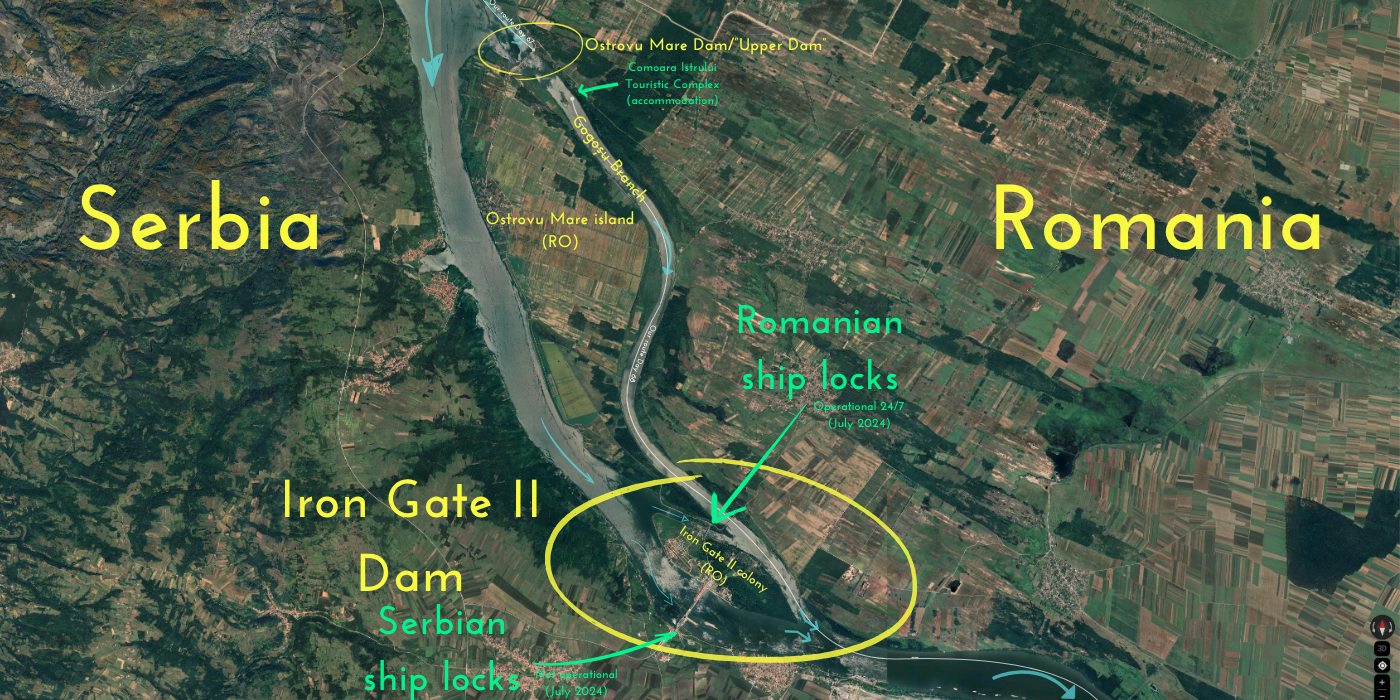
Comparing to what the TID does this year, they are first of all on the Serbian side of the Danube. Their equivalent village is Brza Palanka, which is 10 kilometers further downstream than Crivina. The next day, they go to Kusjak Beach to camp one night, which is only another 20 kilometers downstream and still before Iron Gate II shiplock. Though it looks like Kusjak Beach is too far downstream to still go to the Romanian lock through Ostrovul Mare island, leaving only the dubiously-operational Serbian lock, I think the lack of a current will help them paddle upstream to still go through the Romanian lock. They then paddle about 31 kilometers to Novo Selo in Bulgaria, which does not have an immigration office. However, as they have the power of being a group, immigration comes to them.
Iron Gate II is the last real physical obstacle for us on the Danube. Kayaking from Crivina to Hidrocentrala Gogoșu and then packing up Zucchini and staying a night is the best way to preserve energy. Jonas is quite sure there will be a (good) current in the Gogoșu branch. From the riverside accommodation, we can also hopefully get a really early start when we continue paddling onward.
Leaving Crivina for Comoara Istrului
The alarm went off at 6:20, but I hadn’t slept much. Jonas had been very active during the night and it woke me up several times.
Groggy and slightly grumpy, I got dressed for the day. At 6:45 we went downstairs to drink coffee in the wonderful outdoor breakfast nook. We also received two chocolate cake thingies that were already unpacked. No choice but to eat it.
Jonas picked up the packed breakfast from the fridge while I brushed teeth upstairs and kept packing up. Everything took a lot longer than anticipated.
By the time we were downstairs, the host still had a question. With the translator apps out, it took a couple of minutes, but we managed to tell him roughly where we were going (Gogoșu or Porțile de Fier #2). A few minutes later, he translated something that was basically a bon voyage. He opened the gate and we walked to our old launch spot.
On the way, we met a small council of cats meeting. They didn’t want pets, but they looked very sweet from the safety of the fence. The lady who lives there just returned home by bicycle while we continued walking to our launch spot.
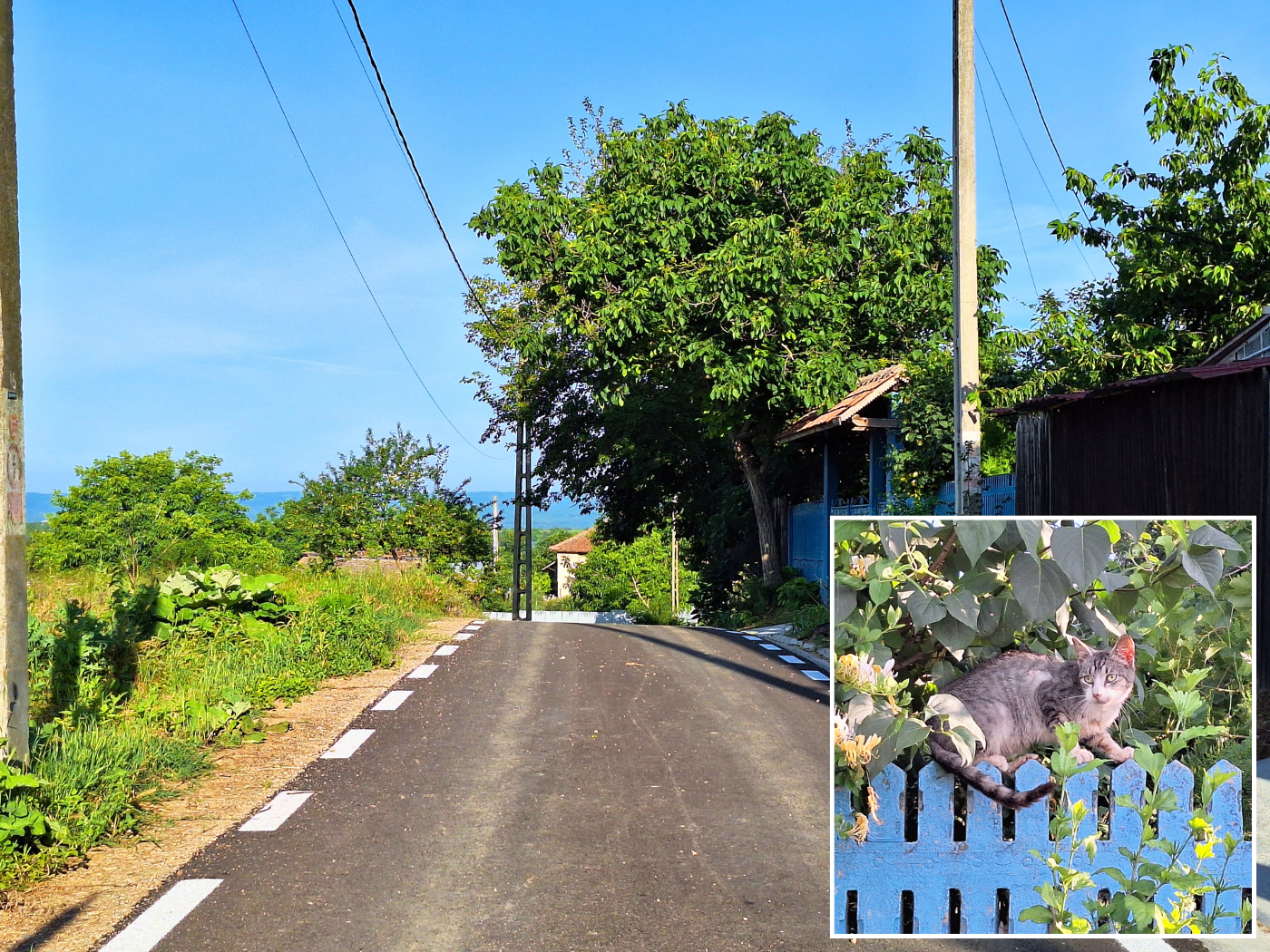
We pumped up Zucchini. It was incredible how well the silk tape we applied in Drobeta-Turnu Severin had managed to keep on. I guess it’s a good material for our boat.
Once everything was up and running, we carried Zucchini to the icky water. The amount of algae in the shallow bits had increased since two days. We attached all our heavy luggage and off we went. Starting time: 8:18—much later than hoped. Where had all the time gone?
Headwind to the Turn
The reason for our (attempt at an) early start was that the wind was going to pick up. Though our paddling direction will change by 130° throughout this short paddling day and we will likely experience tailwind at some point, we prefer no wind. And at this very start, we had quite a strong headwind to battle through.
We had to paddle closer to the center of the river to not get stuck in the plants and to also shortcut the turn a little bit. We paddled past the kilometer sign 894 that we’d walked by the day before. Out there away from shore, the waves were a bit high. Jonas tried to steer us closer to shore, but I told him not to because then we’ll have to paddle a greater distance. If the waves get too high and I get too wet, I’ll tell him. Also, kayaking directly against the wind is better than having it a little bit across, which tires one arm much more than the other.
I didn’t stop to take a break from paddling for almost half an hour, when my throat ran dry and I needed a sip of water. That was slightly after the Serbian village of Ljubičevac. We’d turned just enough to see the bits of Serbian land on the right untangle itself from the Romanian shores on the left. Behind it, it revealed the town of Brza Palanka in Serbia. I think the TID stops there for one night.
I hope today will be our last day under the influence of the Košava wind. It’s been a topic since Belgrade, which is objectively way too long ago. The smooth valleys beyond the Iron Gate II dam are so near to us now.
To our left were some funny structures. Fisherman’s huts made of improvised materials. Some had jetties. The beaches looked nice enough to stop and chill at if we needed it. But I really wanted to make this a quick 20 kilometers. Before we can talk about breaks on land, I’d like to have rounded the bend that’s up ahead.
I have no idea what the bend is called. The only town on this Romanian protrusion is Izvoru Frumos. There were more of these half-collapsed bunkers on the shores like we’d paddled past on the way to Crivina. I’ve found zilch about their history online.
Paddling Past Brza Palanka + Chased by Dogs
It was almost 10:00 when we were about to enter the sharp left turn. Ahead of us was the church of Brza Palanka clear as day. We paddled past a house with a windmill and a fluffy white dog. At first, there was hope that this dog was chill. We intended to take the turn a bit tight to the shore to not paddle more meters than necessary at this point.
It went well. This fluffy dog and another dog didn’t chase us. But then we heard a bark from behind that house, which triggered the whole bunch.
Dog after dog ran down the embankment. There were at least five of them. And while they were on shore, they of course dared each other to get into the water deeper and deeper, until they felt the current.
What dumb fucking animals.
A cargo ship appeared from the other side. We kept paddling, hoping to eventually rid ourselves of this troupe of dramatic canines. But they followed us from the upper and lower embankments for at least 20 minutes. A peaceful egret was fishing from the shore and had to fly off at least twice because of these animals. I don’t understand what makes us so triggering to them.
As we rounded the bend, the wind slowly disappeared. The gradual windlessness made us feel the heat we were producing. It was only when we came across the property of someone else that the dogs cowardly scurried back from whence they came.
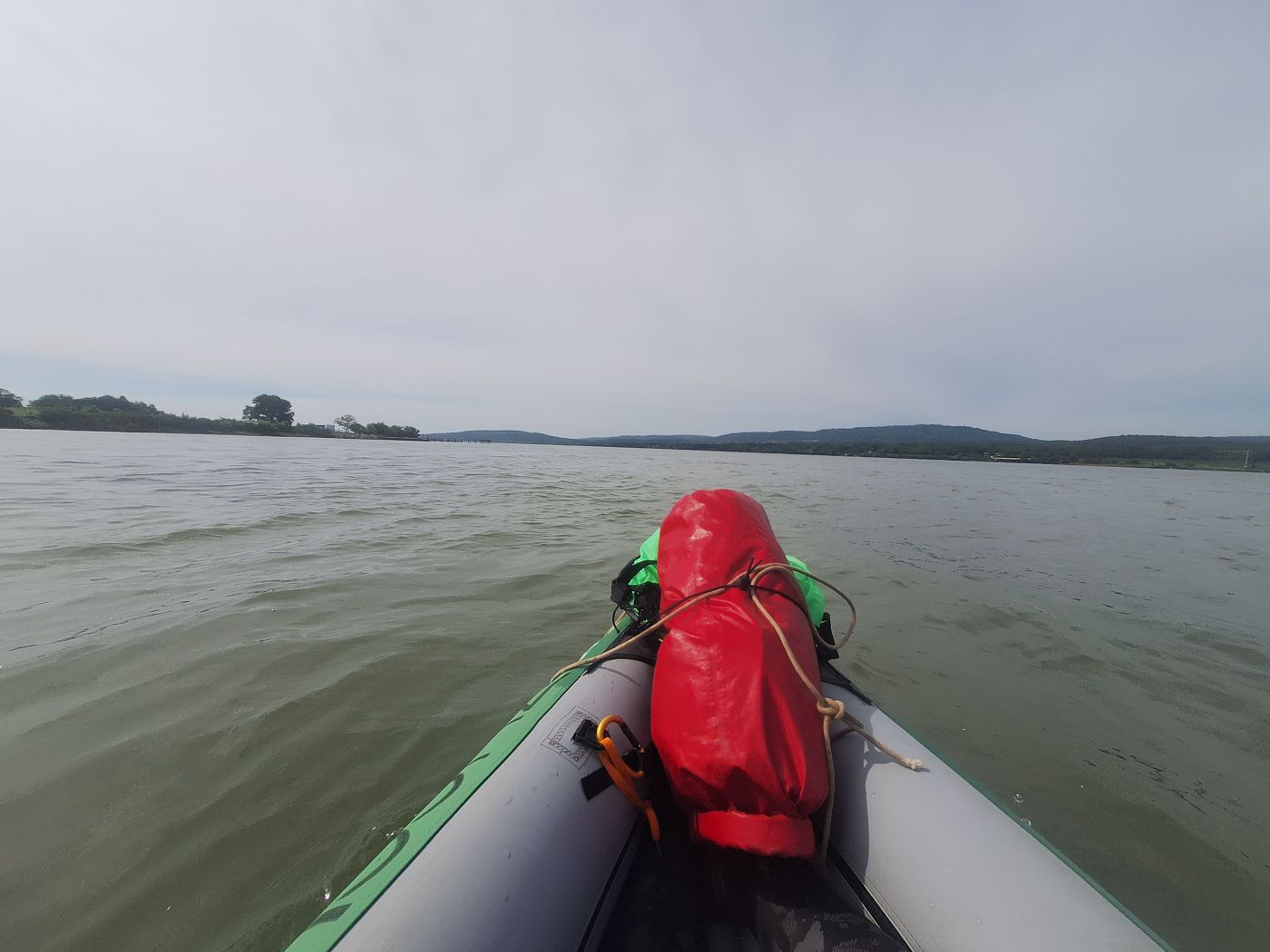
Lunch from Zucchini
The landscape flattened and the current that had been helping us was not where we were. We entered a minefield of water plants. There was a clear path through it at first, but it would be best if we’d paddle 20 meters more to the right where there are no water plants and some flow.
Meanwhile, Jonas grabbed the boxed food we’d received as breakfast from Crivina. There was so much food to go around that both our boxes were filled to the brim, and then there were still some plastic bags for the bread. Jonas decided to make us sandwiches while I tried to get us out of this mess. He had to interrupt to help me so that we’d be out of the tangled mess.
Slowly, we kept turning. Until we could see the staggered dam area of Iron Gate II. From our position, most things were ill-defined. The area where we would cross the last barrier of the Danube and the definitive start of the Lower Danube appeared last: the Gogoșu hydroelectric power station. Between that small power station and the big one more than 12 kilometers downstream is the river island Ostrovu(l) Mare, which is fully Romanian. The Gogoșu dam is our exit point for today.
I received my sandwich from Jonas on the lid of one of our boxes. It was wonderful and really hit the spot at 10:30. These amazing zucchini fritters from the guy who runs Crivina’s guesthouse were so tasty. And it came with a generous amount of cheese. Normally, we’d be eating a protein bar first. But we have to save those for the kayak days we will take between Comoara Istrului and Calafat, when we intend to go camping overnight.
Arriving at Gogoșu Dam Near Comoara Istrului
The wind slowly picked up again, this time coming from our right and then a little more from behind. We tried keeping a good pace, but now that we didn’t have headwind, we didn’t feel the immediate urge to perform well. The kilometer signs counted down only slowly… 892… 891…
Across the Danube in Serbia is the small town Kupuzište. I don’t remember exactly how in 2015 a friend and I hitchhiked from Kladovo to Negotin, but it’s likely via this road. I remember seeing a big dam on the day we left Kladovo, which I think was Iron Gate I close to Kladovo, but I’m not sure how we traveled, to be honest. There’s a cool bridge that spans the Slatina River.
It was 11:10 when we kayaked past the village of Țigănași. The clouds had knitted themselves together into one solid blanket. There were beacons on the shore to indicate ships to stay away from the left bank, probably. And more abandoned bunkers protruding from the disintegrating cliffs. There were some people at the water line with caravans and their cars, fishing in a place the fish are probably extremely confused. There were no roads back up the cliffs, so I wonder how the fuck they got their cars down there, and how they intend to go back up.
The Gogoșu dam was now clearly identifiable, with also the continuation of the main Danube branch taking a right around the river island Ostrovu Mare. We tried to aim for the center of the dam where the water drops off, which was still some five kilometers away from us. This diagonal tailwind really kicked up some waves, which we in part managed to surf. It was hard to keep our paddle rhythm when surfing over the waves under an angle.
To our left was a bit of a small port. There was a jetty sticking out and a ship moored at it. There were several towers to sort electricity lines into their own direction deep into Romania. And something Jonas identified as a water treatment plant. But it might also be a pumping station to irrigate the farmland. Behind it, grazing cows on the pastures.
The sky appeared below the concrete spillways of the dam. We were entering high-definition visuals and could finetune our aim. Our landing spot is somewhere to the left of the spillways where Jonas had identified a hole in the concrete barrier. We were approaching at a good speed.
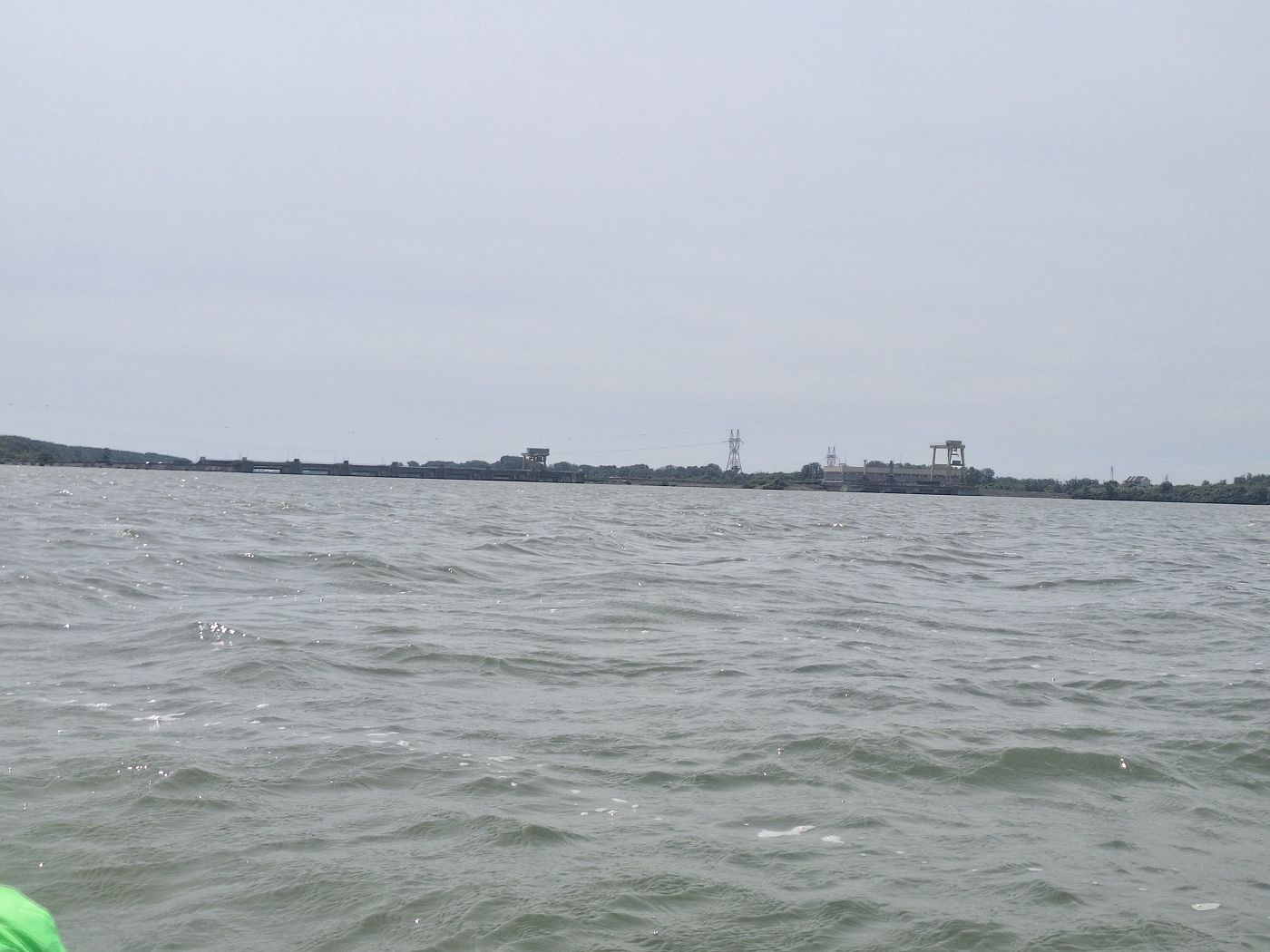
We passed another cliff where Riparia Riparia had dug in its nesting holes. As we were entering the final steps, we also saw the curios phenomenon of stilt platforms not far from the shores with de-legged monoblock chairs attached to them. Like those stilt fishermen in Sri Lanka, except they made it more comfortable. Jonas asked how people would get there and if they’re actually meant to be used during low water levels. I have no idea, but I guess people boat themselves to their private platform on the river and then stay there for hours on end till they’ve caught enough fish.
We landed at Iron Gate II dam at 11:49. No breaks on land today!
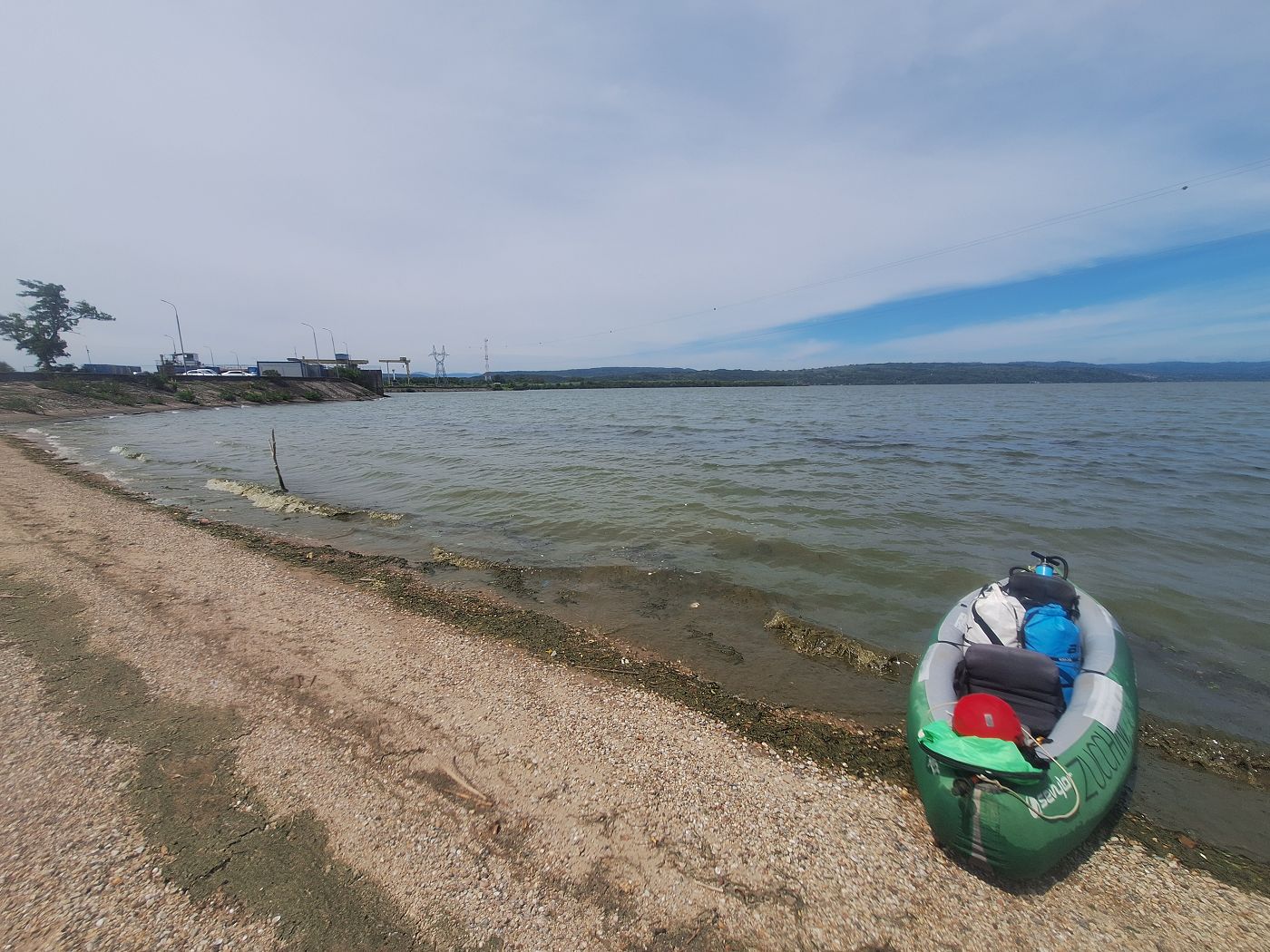
Packing Zucchini + Romanian Gendarmerie Nonsense
We got Zucchini out of the filthy water and onto the also filthy beach. I ran into these spikey nuts I’d seen for the first time on the previous kayak day again. I picked one up (ouch) and showed it to Jonas to warn him that we have to clear the beach from these before we pack up Zucchini. We removed a bunch of them. I think they are water caltrop or water chestnuts, but I bet it’s not the tasty kind. Anyway, I hate them.
I checked up the embankment via the road for a better drying spot for Zucchini. I found a nice-looking triangle, but Jonas wasn’t interested in moving the whole circus there.
While we were packing stuff and watching the boat dry, I saw a guy in a uniform walk towards us via the road and demand attention. Police, again?
Jonas grabbed his dry bag with our documents and walked up there. They chat for a while and Jonas shows our passports. They’re both smiling, so I assume it’s all good when Jonas comes back down and the uniformed man walks off. I ask him what he wanted.
Jonas tells me this guy spoke very good English and wanted to see our documents because a dam is kind of a sensitive area, considering the tense circumstances some 876 kilometers downstream. russian sabotage is never too far away, and that terrorist state has a track record of blowing up dams. The policeman also told Jonas a bit of his life story, how he has a cousin who’s also named Iris and she still lives in the UK. He used to live in the UK but returned to Romania to make career.
We kept packing. Not much later, the young guy returns. I volunteer to go up with the passports while Jonas gets dressed for a long walk. With an open mind, I walk up and say hello and hand over the passports. He wants to know where our Romanian entry stamp is.
I am stunned.
I tell him that Romania doesn’t stamp the passports of fellow EU member states, and that they haven’t for as long as I remember (2013). He says something vague, so I offer to show him the stamp of us leaving Serbia at Usije/Golubac. We took the ferry from there to Moldova Veche in Romania. Surely this must prove something. Perhaps he can call his colleagues over there and ask them whether they’ve seen the people with the kayak in a backpack. I read his shirt, which said Jandarmeria. That’s not water police or immigration. This is a new kind of uniform and the other people are not really his colleagues. I am so tired of all the Romanian show of force.
He gives me the passports back and says he needs to talk to his supervisor. I return to Jonas and not much later, the young guy comes back with an older fella who looks in charge. Rolling my eyes, I tell Jonas I can’t do this and that he must go with his patience of an angel. I can’t take this seriously.
Alone, I do my best to speed up the packing so we can arrive at Comoara Istrului soon. Jonas just messaged them we’d be coming over earlier than anticipated. And now we’re pissing all that time away with some guys with a lot of power who don’t understand the EU or Schengen. I don’t like dams on rivers, especially those without fish ladders, but come on, I wouldn’t blow one up even if I knew how. Perhaps divert your efforts away from two people and an inflatable kayak and check some of those trucks that are using the dam-bridge to cross the border to Serbia. They can carry explosives.
During the next phase where we don’t have our passports on us, we manage to pack up Zucchini. I finish it up while Jonas goes back up to pick up the passports. I carry up some luggage and drop it at the concrete barrier next to the road and return for more luggage, but Jonas also picks some up.
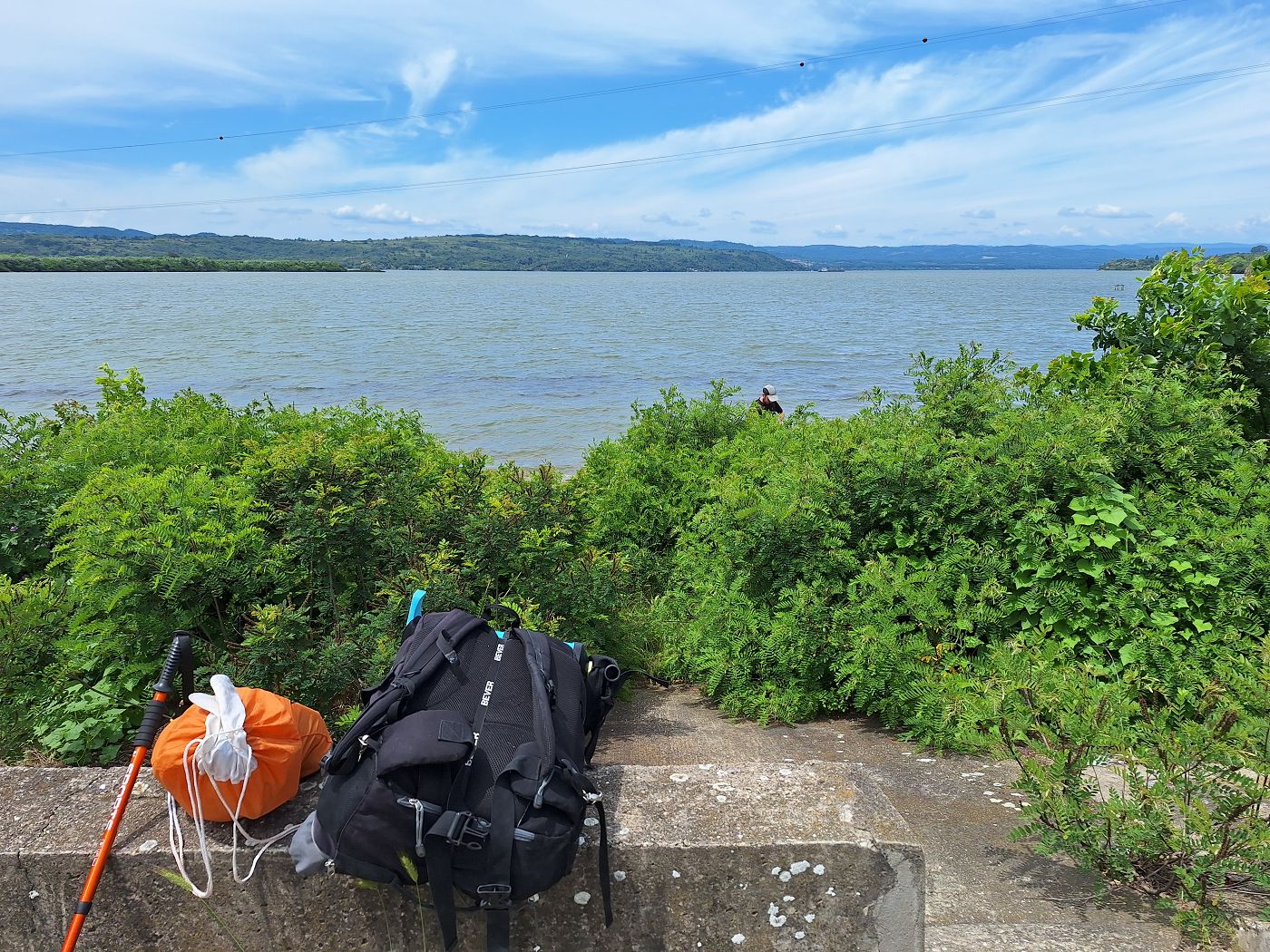
I’m waiting with the luggage ready to go to our accommodation Comoara Istrului, staring at the wall and following a cool bug with my eyes. And then we were suddenly free to go. Jonas had our passports and we put our luggage on our backs to start walking. The two gendarmerie guys come over one last time and I’m ready to lose it, but they only ask us what we’re doing with our boat, whether we’re leaving it on the beach for two days.
Jonas explains that it’s an inflatable kayak and that Zucchini is in the backpack. No, we’re not leaving our boat unsupervised at a dam for two days, knowing we still have to portage around that motherfucker.
Arriving in Complex Turistic Comoara Istrului
Finally, we’re walking to Comoara Istrului. Walking on the road is unpleasant, since there’s no shoulder and the few cars that drive here are all coming at us at high speeds.
So, there’s no town or village in this place that has a name. Technically, I think all houses on this road belong to the village of Gogoșu. I refer to it as Comoara Istrului as short for Complex Turistic Comoara Istrului. I’m aware that ‘Comoara Istrului’ simply means ‘Treasure of the Ister’ and Ister is another Latin name for the Danube, originating from Istros in Ancient Greek.
Once we get close to the complex, we wonder which entrance to take. Satellite view says it’s the long diagonal road that leads to our accommodation, but my spidey sense says it’s the short straight road. I ask Jonas to check it out by himself, since I don’t want to carry all our luggage down, deal with barking dogs, etc. Good thing, because this was the wrong entrance.
We walked back up the road and found the other entrance. This time, it was right. But we had to wait for quite a while and call some people before this older couple showed up. They checked us into our two-storey holiday home and gave us food for lunch and dinner. It was all very lovely and they’d lived in Italy, so we spoke a mix of Spanish, Italian, and Romanian with them.
The older man also showed us the river. This is the Gogoșu branch of the Danube after this small dam. The water speeds looked gloriously fast. The embankment was quite steep, but we can make it work.

Back inside our holiday home, we did some research into the two paddle days to Calafat. It’s roughly 77 kilometers if you don’t shortcut anything. Hypothetically, if the current is good and there’s no wind or even tailwind, could we do it in one day?
Read the next article to find out…
Our Stay in Comoara Istrului
While we had originally scheduled a one-night stop here, it turned out the hosts of this touristic complex were able to give us food twice a day at an extra fee. This changed the whole dynamic, as the nearest town with a food shop was too far for us to walk. Also, there were two tabby cats around the property.
The holiday home itself was also very nice, and the internet speed was incredibly fast. So we could have stayed here a lot longer to rest and work, if we’d felt like doing so. But in the back of our minds, the Danube floods upstream in Germany and Austria were on our minds. That wave is coming, and we want to ride it.

